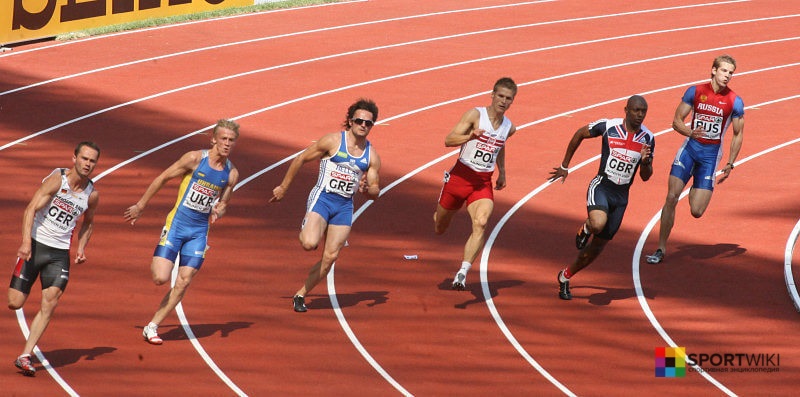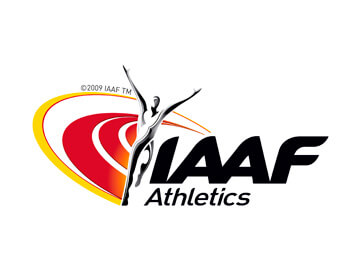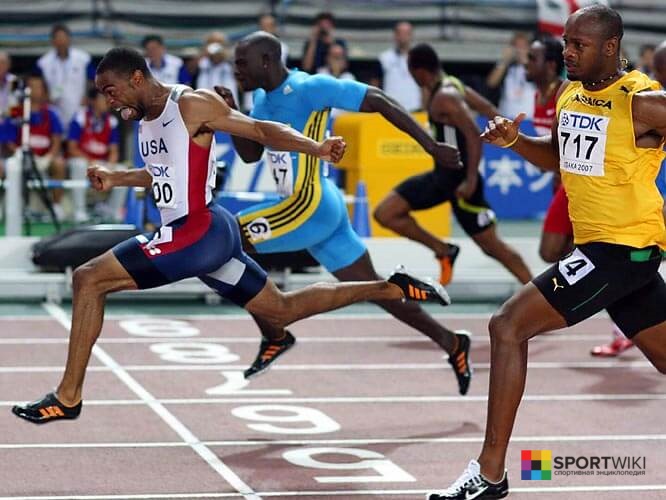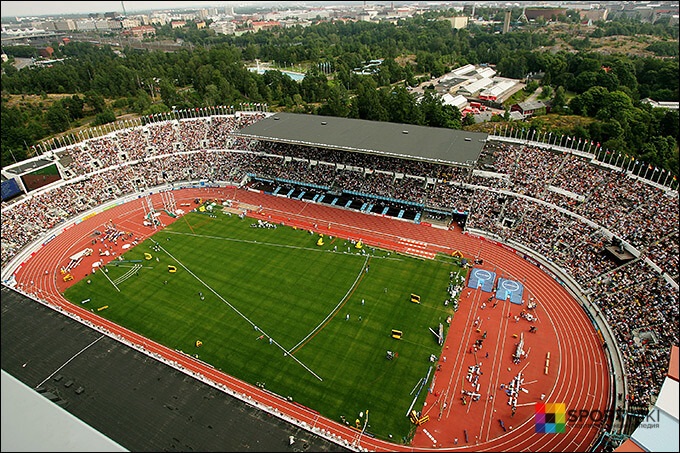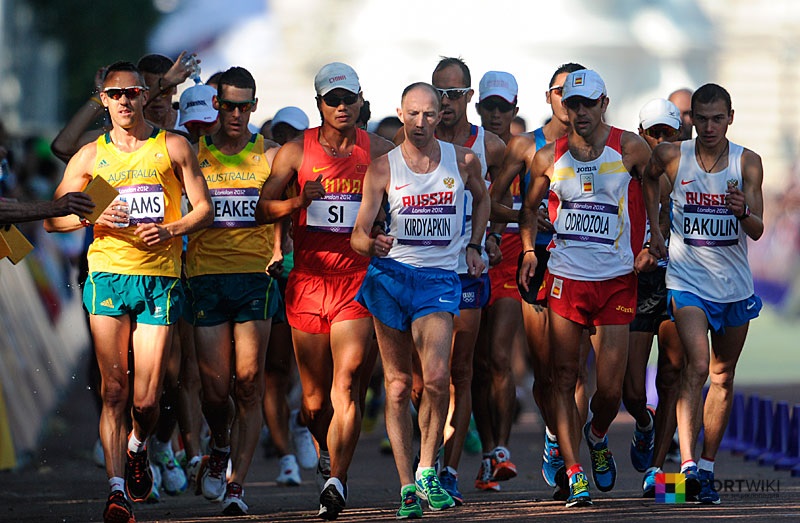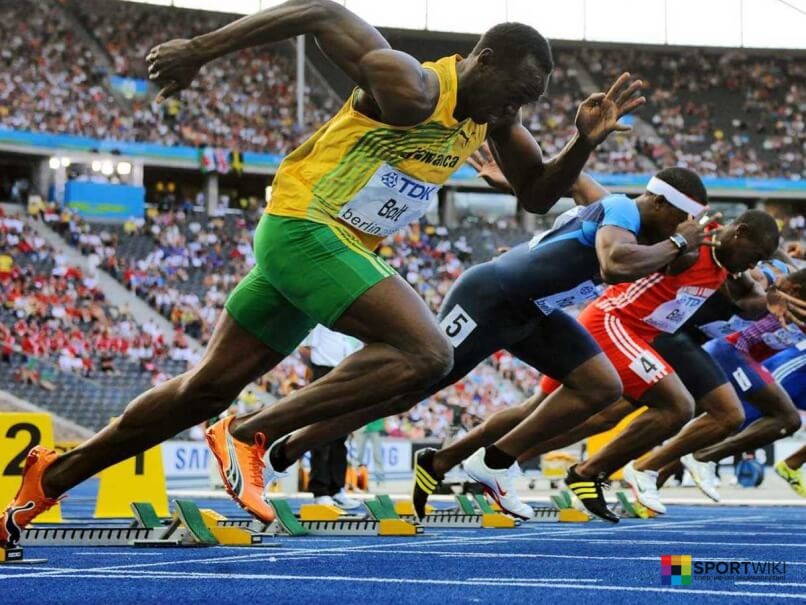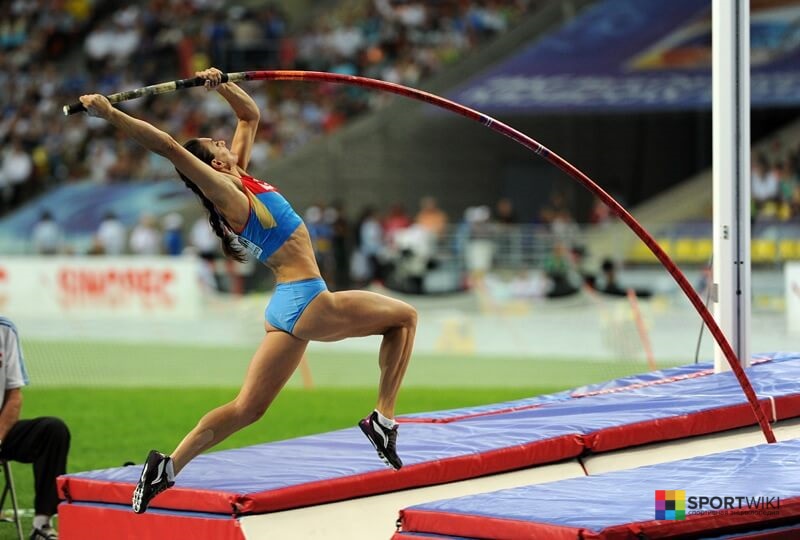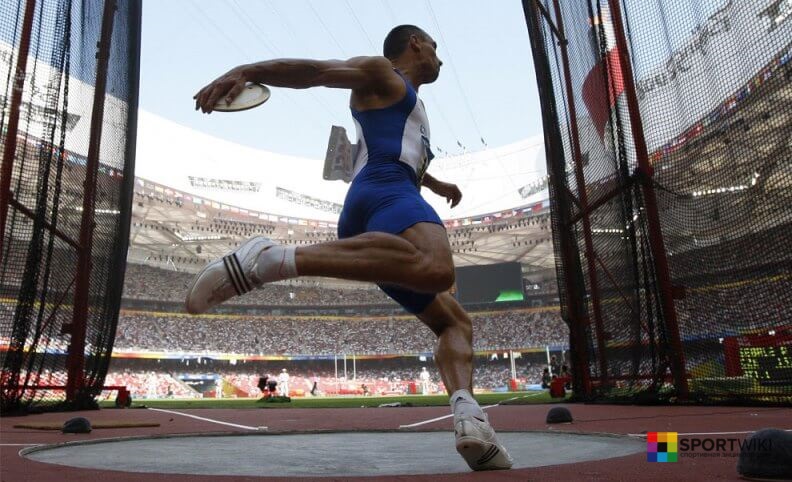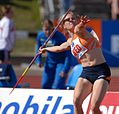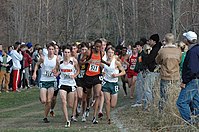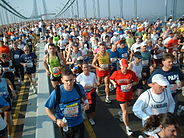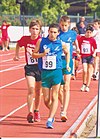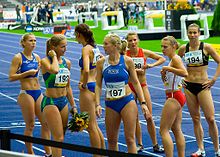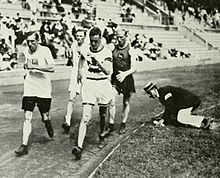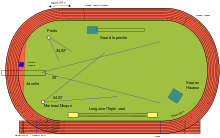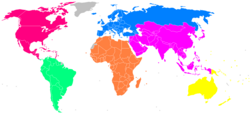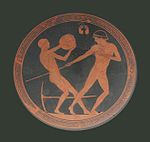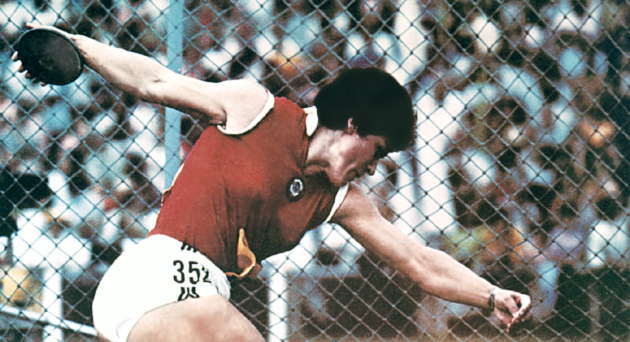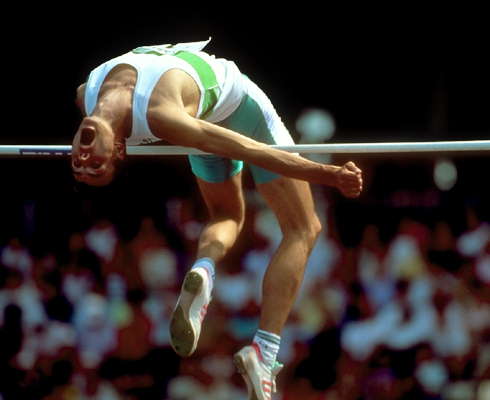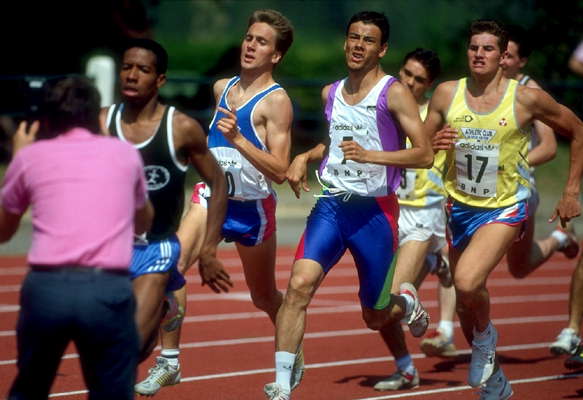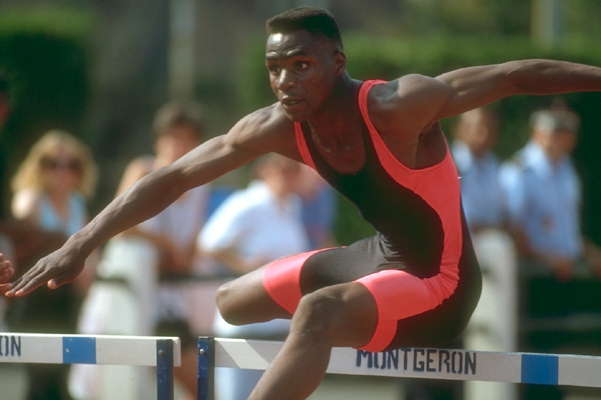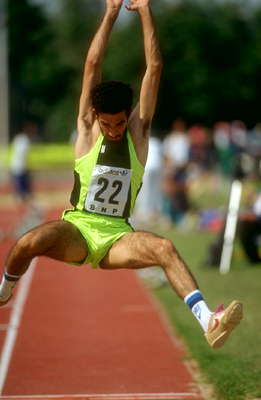Правильное написание слова легкая атлетика:
легкая атлетика
Крутая NFT игра. Играй и зарабатывай!
Правильный транслит слова: legkaya atletika
Написание с не правильной раскладкой клавиатуры: kturfz fnktnbrf
Тест на правописание
Правильно
Легкоатлетический – правильный вариант написания сложного прилагательного, пишется слитно. Согласно правилам русского языка сложные прилагательные терминологического характера пишутся слитно: легкоатлетический, правосторонний, дикорастущий.
Международный легкоатлетический турнир состоится в конце месяца.
Легкоатлетические виды спорта легли в основу первых олимпийских игр.
В легкоатлетическом манеже нашего города часто выступают спортсмены из других городов.
Легкоатлетический тренировочный урок в школе провел мастер спорта.
Неправильно
Легко атлетический, легко-атлетический.
- Как правильно пишется слово «лёгкий»
- Как правильно пишется слово «атлетика»
Делаем Карту слов лучше вместе
Привет! Меня зовут Лампобот, я компьютерная программа, которая помогает делать
Карту слов. Я отлично
умею считать, но пока плохо понимаю, как устроен ваш мир. Помоги мне разобраться!
Спасибо! Я обязательно научусь отличать широко распространённые слова от узкоспециальных.
Насколько понятно значение слова молодцевато (наречие):
Ассоциации к словосочетанию «лёгкая атлетика»
Синонимы к словосочетанию «лёгкая атлетика»
Предложения со словосочетанием «лёгкая атлетика»
- Обладая от природы хорошими скоростными качествами, он вначале стал заниматься лёгкой атлетикой, а зимой – скоростным бегом на коньках.
- Другие ребята из секции лёгкой атлетики щеголяли в такой же форме.
- Для достижения высоких спортивных результатов в этом виде лёгкой атлетики требуется совершенная техника исполнения и высокий уровень развития силовых и скоростно-силовых качеств.
- (все предложения)
Цитаты из русской классики со словосочетанием «лёгкая атлетика»
- Как легкая тень молодая красавица приблизилась к месту назначенного свидания. Еще никого не было видно, вдруг из-за беседки очутился Дубровский перед нею.
- Эх, эх, согреши! // Будет легче для души!
- — Бей же меня, батюшка, бей! — сказал тогда сын, поспешно растегивая запонку рубашки и подставляя раскрытую, обнаженную грудь свою. — Бей; в этом ты властен! Легче мне снести твои побои, чем видеть тебя в тяжком грехе… Я, батюшка (тут голос его возвысился), не отступлюсь от своего слова, очередь за нами, за твоими сыновьями; я пойду за Гришку! Охотой иду! Слово мое крепко: не отступлюсь я от него… Разве убьешь меня… а до этого господь тебя не допустит.
- (все
цитаты из русской классики)
Значение словосочетания «лёгкая атлетика»
-
Лёгкая атле́тика — олимпийский вид спорта, включающий бег, ходьбу, прыжки и метания. Объединяет следующие дисциплины: беговые виды, спортивную ходьбу, технические виды (прыжки и метания), многоборья, пробеги (бег по шоссе) и кроссы (бег по пересечённой местности). Один из основных и наиболее массовых видов спорта. (Википедия)
Все значения словосочетания ЛЁГКАЯ АТЛЕТИКА
Афоризмы русских писателей со словом «лёгкий»
- Даже самая незначительная доля власти легко кружит неразвитые головы.
- Кто по земле ползет, шипя на всё змеёю,
Тот видит сор один… и только для орла,
Парящего легко и вольно над землёю
Вся даль безбрежная светла! - Тот счастлив, кто прошел среди мучений,
Среди тревог и страсти жизни шумной,
Подобно розе, что цветет бездумно,
И легче по водам бегущей тени. - (все афоризмы русских писателей)
×òî òàêîå «Ë¸ãêàÿ àòëåòèêà»? Êàê ïðàâèëüíî ïèøåòñÿ äàííîå ñëîâî. Ïîíÿòèå è òðàêòîâêà.
˸ãêàÿ àòëåòèêà
I
˸ãêàÿ àòëå?òèêà
îäèí èç îñíîâíûõ è íàèáîëåå ìàññîâûõ âèäîâ ñïîðòà, îáúåäèíÿþùèé õîäüáó è áåã íà ðàçëè÷íûå äèñòàíöèè, ïðûæêè â äëèíó è âûñîòó, ìåòàíèÿ äèñêà, êîïüÿ, ìîëîòà, ãðàíàòû (òîëêàíèå ÿäðà), à òàêæå ëåãêîàòëåòè÷åñêèå ìíîãîáîðüÿ Äåñÿòèáîðüå, Ïÿòèáîðüå è äð.  ñîâðåìåííîé ñïîðòèâíîé êëàññèôèêàöèè íàñ÷èòûâàåòñÿ ñâûøå 60 ðàçíîâèäíîñòåé ëåãêîàòëåòè÷åñêèõ óïðàæíåíèé.  ïðîãðàììå ñîâðåìåííûõ Îëèìïèéñêèõ èãð Ë. à. ïðåäñòàâëåíà 24 íîìåðàìè äëÿ ìóæ÷èí è 14 äëÿ æåíùèí. Ëåãêîàòëåòè÷åñêèå ñîðåâíîâàíèÿ âõîäÿò â ïðîãðàììû êðóïíåéøèõ êîíòèíåíòàëüíûõ ñïîðòèâíûõ ñîñòÿçàíèé: ÷åìïèîíàòîâ Åâðîïû, Àôðèêàíñêèõ, Àçèàòñêèõ, Áàëêàíñêèõ, Áðèòàíñêèõ, Ïàíàìåðèêàíñêèõ èãð è äð.
˸ãêàÿ àòëåòèêà — ˨ÃÊÀß ÀÒËÅÒÈÊÀ, îäèí èç íàèáîëåå ìàññîâûõ âèäîâ ñïîðòà; âêëþ÷àåò áåã è õîäüáó íà ðàçëè÷íûå äèñòàíöè… Ñîâðåìåííàÿ ýíöèêëîïåäèÿ
Морфемный разбор слова:
Однокоренные слова к слову:
Легкая атлетика
Легкая атлетика – это олимпийский вид спорта, который включает в себя беговые виды, спортивную ходьбу, многоборья, пробеги, кроссы и технические виды. Легкую атлетику принято называть королевой спорта, потому что она является одним из самых массовых видов спорта и в её дисциплинах всегда разыгрывалось наибольшее количество медалей на Олимпийских играх. Легкоатлеты – спортсмены, которые занимаются одним или несколькими видами легкой атлетики.
Федерации легкой атлетики
Международная ассоциация легкоатлетических федераций (англ. International Association of Athletics Federations; IAAF) основана в 1912 году и объединяет в себе национальные федерации. Штаб квартира ассоциации находится в Монако.
Всероссийская федерация лёгкой атлетики (ВФЛА) занимается развитием и популяризацией лёгкой атлетики в России, а также руководит проведением всероссийских соревнований.
Европейская легкоатлетическая ассоциация — европейский руководящий орган по легкоатлетическим видам спорта.
История развития легкой атлетики (кратко)
Лёгкая атлетика считается очень древним видом спорта, об этом говорят повсеместные археологические находки (монеты, вазы, скульптуры и т.д.). Самым древним из легкоатлетических видов является бег. Кстати, бег осуществлялся на дистанцию, равную одному стадию — ста девяносто двум метрам. Именно от этого названия произошло слово стадион.
Древние греки называли все физические упражнения атлетикой, которую в свою очередь было принято делить на «легкую» и «тяжелую». К легкой атлетике они относили упражнения, развивающие ловкость и выносливость (бег, прыжки, стрельба из лука, плавание и т.д.). Соответственно, все упражнения, которые развивали силу, относились к «тяжелой» атлетике.
Первым олимпийским чемпионом по легкой атлетике принято считать Короибоса (776 г. до н.э.), именно эту дату принято считать началом истории легкой атлетики. Современная же история легкой атлетики берет начало с соревнований в беге на дистанцию около 2 км учащимися колледжа в г. Регби (Великобритания) в 1837 г. Позднее в программу соревнований стали включать бег на короткие дистанции, бег с препятствиями, метание тяжести, прыжки в длину и высоту с разбега.
В 1865 году основан Лондонский атлетический клуб, который занимался популяризацией легкой атлетики.
В 1880 году была организована любительская атлетическая ассоциация, объединившая в себе все легкоатлетические организации Британской империи.
Бурное развитие лёгкой атлетики связано с олимпийскими играми (1896 г.), в которых ей отвели наибольшее место.
Соревнования по легкой атлетике проводились на протяжении всего существования человечества. Изначально люди были заинтересованы исключительно в воспитании воинов, способных приносить победы в боях. Военный интерес к воспитанию физически развитых мужчин постепенно стал перерождаться в спортивные игры, основными состязаниями в которых были на выносливость и силу. С этого момента и началось зарождение легкой атлетики.
Правила легкой атлетики
Победителем в легкоатлетических соревнованиях считается спортсмен или команда, показавшие наилучший результат в финальных забегах или финальных попытках технических дисциплин.
Беговые виды лёгкой атлетики, как правило, разбиваются на несколько этапов:
Количество участников соревнований определяется регламентом соревнований, при этом мужчины и женщины не участвуют в общих стартах.
Стадион для легкой атлетики
Легкоатлетические стадионы бывают открытыми или закрытыми. Обычно стадион совмещен с футбольным стадионом и полем. Открытый стадион состоит из овальной 400 метровой дорожки, которая в свою очередь поделена на 8 или 9 дорожек, а также секторов для технических дисциплин. Зачастую соревнования по метанию копья или молота выносят за пределы стадиона, делается это по соображениям безопасности.
Закрытые стадионы (манежи) отличаются от открытых, более короткой дорожкой (200 м.) и числом дорожек на которые она поделена (4-6 шт.).
Виды легкой атлетики
Давайте рассмотрим, какие виды спорта входят в легкую атлетику. Спортивная ходьба – легкоатлетическая дисциплина, которая отличается от беговых видов тем, что у спортсмена должен быть постоянный контакт ноги с землей. Соревнования по спортивной ходьбе проводятся на дорожке (10 000 м., 20 000 м., 30 000 м., 50 000 м.) или шоссе (20 000 м. и 50 000 м.).
Бег – один из самых старых видов спорта, по которому были утверждены официальные правила соревнований, был включен в программу с самых первых Олимпийских игр современности 1896 года. Бег в легкой атлетике представлен следующими видами: спринт, бег на средние дистанции, бег на длинные дистанции, барьерный бег, эстафета.
Виды бега в легкой атлетике:
Прыжки подразделяются на вертикальные (прыжки в высоту и прыжки с шестом) и горизонтальные (прыжок в длину и тройной прыжок).
Метания – это упражнения легкоатлетов, требующие «взрывных» мышечных усилий. Целью в данном виде является перемещение снаряда на максимальное расстояние от спортсмена. Виды метания в легкой атлетике:
Многоборья – спортивная дисциплина, включающая в себя соревнования в нескольких дисциплинах одного или разных видов спорта.
Беговые виды, спортивную ходьбу, многоборья, пробеги, кроссы и технические виды.
На сегодняшний день в программу Олимпийских игр входит 24 вида у мужчин, и 23 вида у женщин. Спортсмены соревнуются в:
К циклическим видам легкой атлетики относятся: спортивная ходьба, спринт, бег на средние и длинные дистанции. К техническим видам легкой атлетики относятся: метания, вертикальные и горизонтальные прыжки.
Чемпионаты по легкой атлетике
Основные физические качества — выносливость, сила, скорость, гибкость. Кроме этого во время занятий легкой атлетикой приобретаются навыки координации движений, быстрого и экономического передвижения и рационального выполнения сложных физических упражнений.
Мы постарались максимально полно охватить тему, поэтому данную информацию можно смело использовать при подготовке сообщений, докладов по физкультуре и рефератов на тему «Легкая атлетика».
Источник
Легкая атлетика: виды и история олимпийских дисциплин
Благодаря разнообразию и доступности легкая атлетика является самым массовым видом спорта. Олимпийская программа, кроме беговых видов, включает в себя еще четыре раздела. Каждый раздел состоит из нескольких дисциплин. Рассмотрим основные легкоатлетические виды спорта.
Легкая атлетика – определение
Легкая атлетика – это комплексный вид спорта, который включает в себя множество спортивных дисциплин, разделенных на 5 групп: бег, ходьба, прыжки, метания, многоборье.
Всероссийский реестр видов спорта содержит около 100 спортивных дисциплин, отнесенных к категории – легкая атлетика. В программу Олимпийских игр входит 24 упражнения для мужчин, 23 для женщин и одна смешанная эстафета.
Краткая история легкой атлетики
История спорта началась с легкой атлетики. Первым олимпийским чемпионом стал бегун по имени Кореб из города Элиды.
Вид спорта № 1
Легкую атлетику считают родоначальником Олимпийских игр. Первые Олимпийские игры в Древней Греции прошли в 776 году до нашей эры. Согласно древнегреческим мифам, соревнования проводились только в одном виде спорта – бег. Дистанция составляла 192 метра.
Состязания в беге, оставались единственным видом соревнований на протяжении первых 13 олимпиад. Со временем концепция Игр менялась. Сначала добавились новые дистанции в беге, затем появилось пятиборье. Его основу составили легкоатлетические упражнения. Первое многоборье включало в себя: бег, прыжки в длину, метание дисков, метание копий и борьбу.
Современная история
История современной легкой атлетики началась в 1837 году. В г. Регби (Великобритания) были проведены состязания в беге среди учащихся колледжа. Инициативу подхватили другие учебные заведения (в том числе университеты Оксфорда и Кембриджа). Во многом благодаря университетскому влиянию в 1865 году был основан Лондонский атлетический клуб – первая официальная организация легкой атлетики.
В 1896 году были возрождены всемирные Олимпийские игры. Назрела необходимость организовать международный руководящий орган. В 1912 году в Стокгольме прошел первый Конгресс. Он положил начало созданию Международной ассоциации легкоатлетических федераций (International Amateur Athletics Federation, IAAF). В настоящее время членами ИААФ являются 214 стран, включая Россию. Штаб-квартира ассоциации находится в Монако.
Классификация легкоатлетических видов спорта
Классифицировать легкоатлетические виды спорта можно по различным параметрам. Приведем несколько примеров.
Классификация по половому и возрастному признаку: мужские и женские соревнования, нормативы для юношей и девушек.
По месту проведения: крытые или открытые стадионы, шоссейные дороги или пересеченная местность.
По двигательным движениям: бег, ходьба, прыжки, метания и комбинация этих упражнений (многоборье).
Отечественная педагогическая литература предполагает разделение легкоатлетических дисциплин на классические (олимпийские) и неклассические (все остальные). Такой подход соответствует разделению всех видов легкой атлетики на пять основных групп. Рассмотрим эти группы.
Олимпийские виды легкой атлетики
Легкую атлетику называют королевой олимпийского спорта. Забеги на короткие и длинные дистанции, прыжки в высоту, длину, метание молота и так далее. Олимпийские чемпионы 2021 года разыграли 48 комплектов наград. Мужчины — 24 дисциплины, женщины — 23, плюс одна смешанная эстафета.
Беговые дисциплины
В медальном зачете бег занимает первую позицию. Олимпийская программа состоит из 13 дисциплин.
Спринт – включает в себя 3 дистанции: 100, 200 и 400 метров.
Бег на средние дистанции – 800 и 1500 метров.
Бег на длинные дистанции – 5 и 10 километров.
Марафон – дистанция 42 км, 195 м. Забег проводят по дороге с твердым покрытием (шоссе).
Барьерный бег включает в себя 2 дисциплины. Мужчины соревнуются на дистанциях 110 м и 400 м. Женщины вместо 110 бегут 100 метров. Высота барьеров у женщин ниже.
Бег с препятствиями (стипль-чез) — самостоятельная беговая дисциплина. В олимпийскую программу входит бег на 3000 метров. Состязания проводят на стадионе. Атлеты бегут по кругу. Спортсмену необходимо преодолеть 35 барьерных препятствий, включая 7 ям с водой. Водная преграда находится сразу за барьером. Барьер закреплен жестко и не падает, как в барьерном беге. Поэтому бегун может напрыгивать (наступать) на препятствие.
Эстафеты – олимпийская дистанция имеет три варианта. В разделе: 4×100 и 4×400, мужчины и женщины соревнуются отдельно. На Олимпийских играх в Токио к классической эстафете прибавили соревнование смешанных команд (4 на 400 метров). В каждой команде по четыре спортсмена — двое мужчин и две женщины.
Спортивная ходьба
Спортивная ходьба – легкоатлетический вид спорта, в котором, в отличие от бега, сохраняют постоянный контакт ноги с землёй. Соревнования проводят вне стадиона (на шоссе). В этом спорте у мужчин установлено 2 олимпийские дистанции: 20 и 50 км, у женщин одна – 20 километров.
Прыжки
Легкая атлетика выделяет два вида прыжков:
вертикальные – прыжок в высоту, прыжки с шестом;
горизонтальные – прыжки в длину, тройной прыжок.
Все 4 дисциплины в 1908 году включены в Олимпийскую программу.
Метания
Метание – это упражнение в толкании или бросании специальных снарядов на дальность. В программу Олимпиады входит 4 дисциплины.
Метание копья. Упражнение выполняют с прямого разбега. Соревнования проводят на стадионе. Атлет разбегается по дорожке и совершает бросок из-за головы, над плечом. Остальные метания выполняют из специального круга.
Метание диска. Бросок производят с ограниченного пространства. Метатель находится внутри огороженного сеткой круга. Вес диска у мужчин – 2 кг, у женщин – 1 килограмм.
Толкание ядра – силовое упражнение с ярко выраженным взрывным характером мышечной работы. Ядро, весом 7,260 кг, толкают от плеча. На Олимпийских играх в Токио (2021 г) американец Райан Краузер установил новый рекорд. Американский атлет метнул ядро на расстояние 23 метра 30 сантиметров.
Многоборье
Многоборье – совокупность нескольких легкоатлетических дисциплин. Среди мужчин проводят состязания по десятиборью. Женщины выступают в семиборье. Олимпийские соревнования разделены на 2 дня.
Десятиборье. Первый день: бег 100 м, прыжок в длину, толкание ядра, прыжок в высоту, бег 400 м. Второй день: барьерный бег 110 м, метание копья, прыжок с шестом, метание диска, бег 1500 м.
Семиборье. Первый этап: барьерный бег 100 м, толкание ядра, прыжок в высоту, бег 200 м. Второй этап: прыжок в длину, метание копья, бег 800 м.
За каждый вид спортсмен получает определённое количество очков. Затем эти очки суммируют и определяют победителей.
Неклассические дисциплины в лёгкой атлетике
Легкоатлетические дисциплины, не входящие в программу современных Олимпийских игр, принято называть неклассическими. Многие из них нам известны с детства.
Перетягивание каната – официальный вид спорта, имеющий свою международную федерацию. В состав организации входит 51 национальная федерация, включая Россию. В период с 1900 по 1920 год перетягивание каната входило в Олимпийскую программу, как одна из дисциплин легкой атлетики.
Кросс – бег по пересеченной местности. До 1924 года являлся олимпийским видом спорта. Теперь легкоатлетический кросс, это оздоровительная пробежка среди любителей. Соревнования не имеют жесткой международной регламентации. Забег проводят через лесную зону и открытые пространства, вне стадиона. Протяженность дистанции от 4 до 12 километров.
Бег на 60 метров – не олимпийский вид спринта. Это легкоатлетическое упражнение знает каждый старшеклассник. Упражнение входит в школьную программу общей физической подготовки (ОФП) и является обязательным нормативом ГТО.
Какие качества развивает легкая атлетика
Спортивный результат в легкой атлетике, это оценочный показатель. Он имеет качественное или количественное измерение. Надо прибежать первым, дальше метнуть или прыгнуть. Соревновательный подход стимулирует физическое развитие. Физические возможности человека связаны с так называемыми кондиционными и координационными способностями организма.
Кондиционные способности (качества) – это совокупность 4 индивидуальных, физических (двигательных) особенностей: силы, выносливости, быстроты и гибкости.
Координационная способность – это способность применять двигательные качества и адекватно перестраивать двигательную деятельность в различных ситуациях. В педагогической литературе координационные способности (качества) связывают с понятием ловкость.
Легкоатлетические упражнения развивают все физические качества.
Силовые качества
Мышечная сила – способность преодолевать внешнее сопротивление или противодействовать ему за счет мышечных усилий.
Средствами развития силы являются силовые тренировки. В легкой атлетике, это: спринт, метания, толкание ядра и другие «взрывные» упражнения.
Силовые нагрузки решают сразу два вопроса. Во-первых, увеличивают расход энергии (молекул АТФ). Во-вторых, провоцируют гипертрофию (рост) мышечной ткани.
Выносливость
Выносливость – способность организма противостоять физической усталости. Лучше всего выносливость развивает бег на длинные дистанции. Легкоатлетический кросс увеличивает объём легких и укрепляет сердечную мышцу.
Регулярные тренировки помогают организму адаптироваться к нагрузкам. То, что вчера казалось непосильным, сегодня становится обычной нагрузкой. Так мы развиваемся, становимся сильнее.
Скоростные способности
Быстрота – способность выполнять двигательные действия, в минимальный для данных условий промежуток времени.
Чтобы развить скоростные способности, проводят тренировки, в которых происходит резкая смена интенсивности и направления движений. Приведем несколько примеров. Подвижные игры (эстафеты, футбол, баскетбол); бег с ускорением и старты из различных исходных положений (высокий старт, низкий); прыжки через скакалку и так далее.
Гибкость
Гибкость – способность выполнять двигательные действия с максимальной амплитудой. Без подвижных суставов и гибких связок невозможно развить скоростные способности. Поэтому развитию гибкости в легкой атлетике уделяют особое внимание.
Ловкость
Это физическое качество объединяет все двигательные способности: быстроту, гибкость, выносливость, силу. Ловкость – это способность точно, быстро и рационально выполнять сложные двигательные движения.
В легкой атлетике ловкость развивают такие упражнения как, прыжки в высоту, прыжки с шестом, барьерный бег, стипль-чез. Они требуют от спортсмена особой концентрации и координации движений.
Заключение
Легкая атлетика объединяет виды спорта, основанные на естественных движениях: ходьбу, бег, прыжки, метание. Разнообразие упражнений дает широкие возможности для тренировочного процесса.
Можно подобрать нагрузку любой сложности. Школьник, домохозяйка, олимпийский чемпион – каждый занимается в меру своих возможностей и целей.
Легкоатлетические упражнения, с одной стороны, способствую физическому развитию, с другой стороны, позволяют оценивать уровень физической подготовленности человека.
Постскриптум
Откройте следующею страничку. Простыми словами расскажем, откуда мышцы берут энергию , зачем нужны молекулы АТФ и чем аэробная нагрузка отличается от силовой.
Источник
Как правильно пишется слово «легкоатлетка»
Источник: Орфографический академический ресурс «Академос» Института русского языка им. В.В. Виноградова РАН (словарная база 2020)
Делаем Карту слов лучше вместе

Спасибо! Я стал чуточку лучше понимать мир эмоций.
Вопрос: вплетение — это что-то нейтральное, положительное или отрицательное?
Синонимы к слову «легкоатлетка»
Предложения со словом «легкоатлетка»
Значение слова «легкоатлетка»
Отправить комментарий
Дополнительно
Значение слова «легкоатлетка»
Предложения со словом «легкоатлетка»
Легкоатлетка внесла несколько вполне здравых поправок: начала есть меньше хлопьев и больше салатов.
Она была высокого роста со стройной фигурой легкоатлетки, но большие груди совсем не подходили к узким бёдрам, плечам, маленькой голове.
Например, во время тренировочного матча по футболу женских команд в спортивном лагере он надел мини юбочку и вышел играть за команду легкоатлеток.
Синонимы к слову «легкоатлетка»
Морфология
Карта слов и выражений русского языка
Онлайн-тезаурус с возможностью поиска ассоциаций, синонимов, контекстных связей и примеров предложений к словам и выражениям русского языка.
Справочная информация по склонению имён существительных и прилагательных, спряжению глаголов, а также морфемному строению слов.
Сайт оснащён мощной системой поиска с поддержкой русской морфологии.
Источник
Как правильно пишется слово «легкоатлетический»
Источник: Орфографический академический ресурс «Академос» Института русского языка им. В.В. Виноградова РАН (словарная база 2020)
Делаем Карту слов лучше вместе

Спасибо! Я обязательно научусь отличать широко распространённые слова от узкоспециальных.
Насколько понятно значение слова преобразовывать (глагол), преобразовывал:
Синонимы к слову «легкоатлетический»
Предложения со словом «легкоатлетический»
Сочетаемость слова «легкоатлетический»
Значение слова «легкоатлетический»
Отправить комментарий
Дополнительно
Значение слова «легкоатлетический»
Предложения со словом «легкоатлетический»
Как легкоатлетическое соревнование эстафетный бег широко распространился в конце XIX века.
Все члены легкоатлетической команды учились в седьмом или восьмом классе, но тренер всегда обращался с нами как с мужчинами.
Она с группой других девушек, своих ровесниц, состояла в какой-то легкоатлетической секции и участвовала в соревнованиях.
Синонимы к слову «легкоатлетический»
Сочетаемость слова «легкоатлетический»
Морфология
Карта слов и выражений русского языка
Онлайн-тезаурус с возможностью поиска ассоциаций, синонимов, контекстных связей и примеров предложений к словам и выражениям русского языка.
Справочная информация по склонению имён существительных и прилагательных, спряжению глаголов, а также морфемному строению слов.
Сайт оснащён мощной системой поиска с поддержкой русской морфологии.
Источник
Значение слова «легкоатлетический»
Источник (печатная версия): Словарь русского языка: В 4-х т. / РАН, Ин-т лингвистич. исследований; Под ред. А. П. Евгеньевой. — 4-е изд., стер. — М.: Рус. яз.; Полиграфресурсы, 1999; (электронная версия): Фундаментальная электронная библиотека
легкоатлети́ческий
1. связанный, соотносящийся по значению с термином лёгкая атлетика
Делаем Карту слов лучше вместе

Спасибо! Я стал чуточку лучше понимать мир эмоций.
Вопрос: двубортный — это что-то нейтральное, положительное или отрицательное?
Синонимы к слову «легкоатлетический»
Предложения со словом «легкоатлетический»
Сочетаемость слова «легкоатлетический»
Понятия со словом «легкоатлетический»
Бег по пересечённой местности, или кросс (сокращение от англ. cross country race или англ. cross country running, кросс кантри рейс или кросс кантри раннинг — «бег по пересечённой местности») — одна из дисциплин лёгкой атлетики.
Отправить комментарий
Дополнительно
Предложения со словом «легкоатлетический»
Как легкоатлетическое соревнование эстафетный бег широко распространился в конце XIX века.
Все члены легкоатлетической команды учились в седьмом или восьмом классе, но тренер всегда обращался с нами как с мужчинами.
Она с группой других девушек, своих ровесниц, состояла в какой-то легкоатлетической секции и участвовала в соревнованиях.
Синонимы к слову «легкоатлетический»
Сочетаемость слова «легкоатлетический»
Морфология
Правописание
Карта слов и выражений русского языка
Онлайн-тезаурус с возможностью поиска ассоциаций, синонимов, контекстных связей и примеров предложений к словам и выражениям русского языка.
Справочная информация по склонению имён существительных и прилагательных, спряжению глаголов, а также морфемному строению слов.
Сайт оснащён мощной системой поиска с поддержкой русской морфологии.
Источник
Теперь вы знаете какие однокоренные слова подходят к слову Как пишется слово легкая атлетика, а так же какой у него корень, приставка, суффикс и окончание. Вы можете дополнить список однокоренных слов к слову «Как пишется слово легкая атлетика», предложив свой вариант в комментариях ниже, а также выразить свое несогласие проведенным с морфемным разбором.
лёгкая атлетика
- лёгкая атлетика
-
Вид спорта, основу которого составляют естественные движения человека
Словарь многих выражений.
2014.
Синонимы:
Смотреть что такое «лёгкая атлетика» в других словарях:
-
Лёгкая атлетика — Характеристика … Википедия
-
Лёгкая атлетика — Лёгкая атлетика. Метание диска. Легкая атлетика ЛЁГКАЯ АТЛЕТИКА, один из наиболее массовых видов спорта; включает бег и ходьбу на различные дистанции, прыжки в длину и высоту, метание спортивных снарядов, легкоатлетическое многоборье. Зародилась… … Иллюстрированный энциклопедический словарь
-
ЛЁГКАЯ АТЛЕТИКА — ЛЁГКАЯ АТЛЕТИКА, один из наиболее массовых видов спорта; включает бег и ходьбу на различные дистанции, прыжки в длину и высоту, метание спортивных снарядов, легкоатлетическое многоборье. Зародилась в Великобритании в 18 в. В 1912 основана… … Современная энциклопедия
-
Лёгкая атлетика на Олимпийских играх — Соревнования по лёгкой атлетике на летних Олимпийских играх впервые появились на летних Олимпийских играх 1896 в Афинах и с тех пор включались в программу каждых последующих Игр. Первоначально соревнования были мужскими, но на летних Олимпийских… … Википедия
-
Лёгкая атлетика на Олимпиаде 2008 — Лёгкая атлетика на Летних Олимпийских играх 2008 года Беговые дисциплины 100 м мужчины женщины 200 м мужчины … Википедия
-
Лёгкая атлетика на летних Олимпийских играх 2000 — Трековые дисциплины … Википедия
-
Лёгкая атлетика на летних Олимпийских играх 1976 — года Трековые дисциплины … Википедия
-
Лёгкая атлетика на летних Олимпийских играх 1968 — года Трековые дисциплины … Википедия
-
Лёгкая атлетика на летних Олимпийских играх 1992 — года Трековые дисциплины … Википедия
-
Лёгкая атлетика на летних Олимпийских играх 1956 — Трековые дисциплины … Википедия
-
Лёгкая атлетика на летних Олимпийских играх 1964 — года Трековые … Википедия
|
|
|
| Highest governing body | World Athletics |
|---|---|
| Characteristics | |
| Mixed-sex | Yes |
| Type | Outdoor or indoor |
| Presence | |
| Olympic | Present since inaugural 1896 Olympics |
| Paralympic | Present since inaugural 1960 Paralympics |
Athletics is a group of sporting events that involves competitive running, jumping, throwing, and walking.[1] The most common types of athletics competitions are track and field, road running, cross country running, and racewalking.
The results of racing events are decided by finishing position (or time, where measured), while the jumps and throws are won by the athlete that achieves the highest or furthest measurement from a series of attempts. The simplicity of the competitions, and the lack of a need for expensive equipment, makes athletics one of the most common types of sports in the world. Athletics is mostly an individual sport, with the exception of relay races and competitions which combine athletes’ performances for a team score, such as cross country.
Organized athletics are traced back to the Ancient Olympic Games from 776 BC. The rules and format of the modern events in athletics were defined in Western Europe and North America in the 19th and early 20th century, and were then spread to other parts of the world. Most modern top level meetings are held under the auspices of World Athletics, the global governing body for the sport of athletics, or its member continental and national federations.
The athletics meeting forms the backbone of the Summer Olympics. The foremost international athletics meeting is the World Athletics Championships, which incorporates track and field, marathon running and race walking. Other top level competitions in athletics include the World Athletics Cross Country Championships and the World Half Marathon Championships. Athletes with a physical disability compete at the Summer Paralympics and the World Para Athletics Championships.
The word athletics is derived from the Ancient Greek ἀθλητής (athlētēs, «combatant in public games») from ἆθλον (athlon, «prize») or ἆθλος (athlos, «competition»).[2] Initially, the term described athletic contests in general – i.e. sporting competition based primarily on human physical feats. In the 19th century, the term athletics acquired a more narrow definition in Europe and came to describe sports involving competitive running, walking, jumping and throwing. This definition continues to be prominent in the United Kingdom and the former British Empire. Related words in Germanic and Romance languages also have a similar meaning.
In much of North America, athletics is synonymous with sports in general, maintaining the historical usage of the term. The word «athletics» is rarely used to refer to the sport of athletics in this region. Track and field is preferred, and is used in the United States and Canada to refer to athletics events, including race-walking and marathon running (although cross country running is typically considered a separate sport).
History[edit]
Ancient[edit]
Athletic contests in running, walking, jumping and throwing are among the oldest of all sports and their roots are prehistoric.[3] Athletics events were depicted in the Ancient Egyptian tombs in Saqqara, with illustrations of running at the Heb Sed festival and high jumping appearing in tombs from as early as of 2250 BC.[4] The Tailteann Games were an ancient Celtic festival in Ireland, founded circa 1800 BC, and the thirty-day meeting included running and stone-throwing among its sporting events.[5] The original and only event at the first Olympics in 776 BC was a stadium-length running event known as the stadion. This later expanded to include throwing and jumping events within the ancient pentathlon. Athletics competitions also took place at other Panhellenic Games, which were founded later around 500 BC.[6]
Modern era[edit]
The Cotswold Olympic Games, a sports festival which emerged in 17th century England, featured athletics in the form of sledgehammer throwing contests.[7] Annually, from 1796 to 1798, L’Olympiade de la République was held in revolutionary France, and is an early forerunner to the modern Olympic Games. The premier event of this competition was a running event, but various ancient Greek disciplines were also on display. The 1796 Olympiade marked the introduction of the metric system into the sport.[8]
Athletics competitions were held about 1812 at the Royal Military College, Sandhurst,[9] and in 1840 in Shrewsbury, Shropshire at the Royal Shrewsbury School Hunt. The Royal Military Academy at Woolwich held an organised competition in 1849, and a regular series of closed meetings open only to undergraduates, was held by Exeter College, Oxford, from 1850.[10] The annual Wenlock Olympian Games, first held in 1850 in Wenlock, England, incorporated athletics events into its sports programme.[11]
The first modern-style indoor athletics meetings were recorded shortly after in the 1860s, including a meet at Ashburnham Hall in London which featured four running events and a triple jump competition.[12][13]
The Amateur Athletic Association (AAA) was established in England in 1880 as the first national body for the sport of athletics and began holding its own annual athletics competition – the AAA Championships. The United States also began holding an annual national competition – the USA Outdoor Track and Field Championships – first held in 1876 by the New York Athletic Club.[14] Athletics became codified and standardized via the English AAA and other general sports organisations in the late 19th century, such as the Amateur Athletic Union (founded in the US in 1888) and the Union des sociétés françaises de sports athlétiques (founded in France in 1889).
An athletics competition was included in the first modern Olympic Games in 1896 and it has been as one of the foremost competitions at the quadrennial multi-sport event ever since. Originally for men only, the 1928 Olympics saw the introduction of women’s events in the athletics programme. Athletics is part of the Paralympic Games since the inaugural Games in 1960. Athletics has a very high-profile during major championships, especially the Olympics, but otherwise is less popular.
An international governing body, the International Amateur Athletics Federation (IAAF), was founded in 1912. It enforced amateur sport status on competitions during much of the 20th century. Professional competition continued at a low level, becoming increasingly more common as the century progressed. The International Track Association briefly formed a professional track and field circuit in the United States in the 1970s. Athletes used their increasing status to push for remuneration and the IAAF responded with the IAAF Golden Events series and the establishment an outdoor World Championships in 1983, including track and field, racewalking and a marathon event. In modern times, athletes can receive money for racing, putting an end to the so-called «amateurism» that existed before. The global body updated the name to the International Association of Athletics Federations in 2001, moving away from its amateur origins,[15] before taking on its current name World Athletics in 2019.[16]
The Comité International Sports des Sourds had been formed by 1922, to govern international deaf sports, including athletics.[17]
The first organized international competitions for athletes with a physical disability (not deaf) began in 1952, when the first international Stoke Mandeville Games were organized for World War II veterans.[17][18] This only included athletes in a wheelchair. This inspired the first Paralympic Games, held in 1960. Competitions would over time be expanded to include mainly athletes with amputation, cerebral palsy and visual impairment, in addition to wheelchair events.
Events[edit]
World Athletics, the sport’s governing body, defines athletics in six disciplines: track and field, road running, race walking, cross country running, mountain running, and trail running.[19] Mountain running was added in 2003 and trail running was added in 2015.[20][21][22][23]
All forms of athletics are individual sports with the exception of relay races. However, athletes’ performances are often tallied together by country at international championships, and, in the case of cross country and road races, finishing positions or times of the top athletes from a team may be combined to declare a team victor.
Several further forms of competitive running exist outside of the governance of World Athletics. The International Skyrunning Federation (ISF) governs high-altitude mountain running, defined as skyrunning, and is affiliated with the International Climbing and Mountaineering Federation rather than World Athletics.[24] Competitive stair climbing events, usually hosted in skyscrapers, has two common names: vertical running (as described by the ISF) and tower running (as described by the Towerrunning World Association).[25][26] Snowshoe running is a winter sport governed by the World Snowshoe Federation, which is similarly to cross country running but has athletes wearing snowshoes to race over deep snow on an obstacle-free course.[27] The International Association of Ultrarunners organises ultra running as an affiliate of World Athletics, but these long-distance forms of competition fit within World Athletics disciplines, albeit with additional distance.[28]
Track and field[edit]
A typical track and field stadium with an oval running track and a grassy inner field
Track and field competitions emerged in the late 19th century and were typically contested between athletes who were representing rival educational institutions, military organisations and sports clubs.[29] Participating athletes may compete in one or more events, according to their specialities. Men and women compete separately. Track and field comes in both indoor and outdoor formats, with most indoor competitions occurring in winter, while outdoor events are mostly held in summer. The sport is defined by the venue in which the competitions are held – the track and field stadium.
A variety of running events are held on the track which fall into three broad distance categories: sprints, middle-distance, and long-distance track events. Relay races feature teams comprising four runners each, who must pass a baton to their teammate after a specified distance with the aim of being the first team to finish. Hurdling events and the steeplechase are a variation upon the flat running theme in that athletes must clear obstacles on the track during the race. The field events come in two types – jumping and throwing competitions. In throwing events, athletes are measured by how far they hurl an implement, with the common events being the shot put, discus, javelin, and hammer throw. There are four common jumping events: the long jump and triple jump are contests measuring the horizontal distance an athlete can jump, while the high jump and pole vault are decided on the height achieved. Combined events, which include the decathlon (typically competed by men) and heptathlon (typically competed by women), are competitions where athletes compete in a number of different track and field events, with each performance going toward a final points tally.
The most prestigious track and field contests occur within athletics championships and athletics programmes at multi-sport events. The Olympic athletics competition and World Championships in Athletics, and the Paralympic athletics competition and World Para Athletics Championships, are the highest and most prestigious levels of competition in track and field. Track and field events have become the most prominent part of major athletics championships and many famous athletes within the sport of athletics come from this discipline. Discrete track and field competitions are found at national championships-level and also at annual, invitational track and field meets. Meetings range from elite competitions – such as those in the IAAF Diamond League series – to basic all comers track meets, inter-sports club meetings and schools events, which form the grassroots of track and field.
| Track | Field | Combined events | |||||
|---|---|---|---|---|---|---|---|
| Sprints | Middle-distance | Long-distance | Hurdles | Relays | Jumps | Throws | |
| 60 m 100 m 200 m 400 m |
800 m 1500 m 3000 m |
5000 m 10,000 m |
60 m hurdles 100 m hurdles 110 m hurdles 400 m hurdles 3000 m steeplechase |
4×100 m relay 4×400 m relay |
Long jump Triple jump High jump Pole vault |
Shot put Discus throw Hammer throw Javelin throw |
Pentathlon Heptathlon Decathlon |
- Note: Events in italics are competed at indoor world championships only
- Note: Heptathlon can refer to two different events, each consisting of different disciplines and both recognised by IAAF: the indoor heptathlon for men, and the outdoor heptathlon for women.
Road running[edit]
Road running competitions are running events (predominantly long distance) which are mainly conducted on courses of paved or tarmac roads, although major events often finish on the track of a main stadium. In addition to being a common recreational sport, the elite level of the sport – particularly marathon races – are one of the most popular aspects of athletics. Road racing events can be of virtually any distance, but the most common and well known are the marathon, half marathon, 10 km and 5 km. The marathon is the only road running event featured at the IAAF World Championships in Athletics and the Summer Olympics, although there is also an annual IAAF World Half Marathon Championships. The marathon is also the only road running event featured at the World Para Athletics Championships and the Summer Paralympics. The World Marathon Majors series includes the six most prestigious marathon competitions at the elite level – the Berlin, Boston, Chicago, London, New York City and Tokyo Marathons.
The sport of road running finds its roots in the activities of footmen: male servants who ran alongside the carriages of aristocrats around the 18th century, and who also ran errands over distances for their masters. Foot racing competitions evolved from wagers between aristocrats, who pitted their footman against that of another aristocrat in order to determine a winner. The sport became professionalised as footmen were hired specifically on their athletic ability and began to devote their lives to training for the gambling events. The amateur sports movement in the late 19th century marginalised competitions based on the professional, gambling model. The 1896 Summer Olympics saw the birth of the modern marathon and the event led to the growth of road running competitions through annual events such as the Boston Marathon (first held in 1897) and the Lake Biwa Marathon and Fukuoka Marathons, which were established in the 1940s. The 1970s running boom in the United States made road running a common pastime and also increased its popularity at the elite level.[30]
Ekiden contests – which originated in Japan and remain very popular there – are a relay race variation on the marathon, being in contrast to the typically individual sport of road running.
Cross country running[edit]
Competitors mid-race at a boys high school event in the United States
Cross country running is the most naturalistic of the sports in athletics as competitions take place on open-air courses over surfaces such as grass, woodland trails, and earth. It is both an individual and team sport, as runners are judged on an individual basis and a points scoring method is used for teams. Competitions are typically long distance races of 3 km (1.9 mi) or more which are usually held in autumn and winter. Cross country’s most successful athletes often compete in long-distance track and road events as well.
The Crick Run in England in 1838 was the first recorded instance of an organised cross country competition. The sport gained popularity in British, then American schools in the 19th century and culminated in the creation of the first International Cross Country Championships in 1903.[31] The annual IAAF World Cross Country Championships was inaugurated in 1973 and this remains the highest level of competition for the sport. A number of continental cross country competitions are held, with championships taking place in Asia, Europe, North America and South America. The sport has retained its status at the scholastic level, particularly in the United Kingdom and United States. At the professional level, the foremost competitions come under the banner of the IAAF Cross Country Permit Meetings.
While cross country competitions are no longer held at the Olympics, having featured in the athletics programme from 1912 to 1924, it has been present as one of the events within the modern pentathlon competition since the 1912 Summer Olympics. One variation on traditional cross country is mountain running, which incorporates significant uphill and/or downhill sections as an additional challenge to the course. Fell running and Orienteering are other competitive sports similar to cross country, although they feature an element of navigation which is absent from the set courses of cross country.
Racewalking[edit]
Racewalking is a form of competitive walking that usually takes place on open-air roads, although running tracks are also occasionally used. Racewalking is the only sport in athletics in which judges monitor athletes on their technique. Racewalkers must always have a foot in contact with the ground and their advancing leg must be straightened, not bent at the knee – failure to follow these rules results in disqualification from the race.[32]
Racewalking finds its roots in the sport of pedestrianism which emerged in the late 18th century in England. Spectators would gamble on the outcome of the walking competitions. The sport took on an endurance aspect and competitions were held over long distances or walkers would have to achieve a certain distance within a specified time frame, such as Centurion contests of walking 100 miles (160 km) within 24 hours.[32] During this period, racewalking was frequently held on athletics tracks for ease of measurement, and the 1908 Summer Olympics in London saw the introduction of the 3500-metre and 10-mile walks. Racewalking was briefly dropped from the Olympic programme in 1928, but the men’s 50 kilometres race walk has been held at every Olympic Games but one since 1932. The men’s 20 kilometres race walk was added to the Olympic athletics schedule in 1956 and the women’s event was first held in 1992. The most common events in modern competition are over 10 km, 20 km and 50 km on roads, although women’s 3 km and men’s 5 km are held on indoor tracks.
The highest level racewalking competitions occur at the IAAF World Championships in Athletics and at the Summer Olympics, although the sport also has its own separate major competition – the IAAF World Race Walking Cup – which has been held since 1961. The IAAF World Race Walking Challenge forms the primary seasonal competition – athletes earn points for their performances at ten selected racewalking competitions and the highest scoring walkers are entered into that year’s IAAF Race Walking Challenge Final.
Categories[edit]
The significant variation in people’s abilities in the sport of athletics has led to the creation of numerous competitive categories, in order that athletes are pitted against rivals of a similar kind or ability, and to include groups of people who would otherwise not be competitive in open-to-all events. The eligibility of athletes for a given category is occasionally a source of controversy among the sport’s participants, officials and spectators, with disputes typically being rooted in deliberate cheating in order to gain a competitive advantage or differing cultural perspectives over the eligibility of a category.
Beyond the primary categories based on physical attributes, some competitions have further eligibility criteria based on nationality, community membership or occupation.
Men’s and women’s divisions[edit]
The foremost division of this kind is by sex[ling]: in athletics, men and women almost exclusively compete against people of the same sex. In contrast to the men’s division, the development of the women’s division has caused regular dispute in terms of eligibility. Several intersex athletes had success in the women’s division in the early 20th century, such as Stanisława Walasiewicz and Mary Weston (later Mark), and the IAAF responded by introducing sex verification for all athletes in the women’s category, beginning with the disqualification of sprinter Foekje Dillema in 1950 after she refused to be tested.[33] Olympic champion Ewa Kłobukowska became the first athlete to publicly fail the test in 1967 and the humiliation she suffered as a result of the announcement led to sex tests becoming a confidential process.[34] Hurdler Maria José Martínez-Patiño failed a test and was disqualified in 1985, but publicly fought the ban in court and was reinstated in 1988. In 1991, the IAAF replaced the sex chromatin test with general medical tests for athletes of all divisions, due to changes in ethical and scientific viewpoints.[35]
The question of eligibility for the women’s division continued to be a contentious and public issue into the 21st century, with Caster Semenya and Dutee Chand bearing periods of ineligibility and taking the IAAF to the Court of Arbitration for Sport over their bans under the hyperandrogenism rules.[36] An increasing number of trans men and trans women began to compete in the women’s division in the 2010s, which caused other athletes in the division to raise questions of fairness in competition.[37][38]
The dispute reached new heights in 2019 with the United Nations Human Rights Council issuing a statement that the IAAF was breaching «international human rights norms and standards» through its practice of allowing some athletes to compete in the women’s division only once they had lowered their testosterone levels through medical intervention.[39] The IAAF and several prominent women athletes, such as Paula Radcliffe, said this was required in order to prevent a situation where countries deliberately sought out athletes who were intersex, transgender or had a difference in sex development in order to succeed in women’s sport.[40] Others have argued for the abolition of gender verification testing, with academic Maren Behrensen citing the harm to tested athletes’ social and emotional well-being, the inaccuracy of the medical tests, the difficulty of determining the exact performance advantage provided by a given condition, and the moral risk of «gender-engineering» by setting a biological definition for a female athlete.[41]
Age[edit]
Age is a significant determiner of ability to compete in athletics, with athletic ability generally increasing through childhood and adolescence, peaking in early adulthood, then gradually declining from around the age of 30 onwards.[42][43] As a result, numerous age categories have been created to encourage younger and older athletes to engage in competition. At international level, there are three major categories for young athletes: under-23, under-20 (formerly junior), and under-18 (formerly youth). Beyond international rules, different youth categories are in use in the sport, often in the form of two-year or single age groupings.[44] Age categories are more extensive for older athletes and these are commonly organised under the umbrella of masters athletics, which has age groups spanning five years for all athletes aged 35 and above. There is no limit to the number of age groupings, hence Stanisław Kowalski holds a world record for men aged 105 years and over.[45] For competitions where age is not taken into account, this is known as senior or open class athletics; in international rules there remain some restrictions on younger people competing in endurance events for health reasons .[44]
Athletes’ eligibility for a competitive age grouping is typically assessed through official documentation, such as birth records or passports. Instances of age cheating have occurred at all of the IAAF’s global age category championships. One prominent incident was Olympic medalist Thomas Longosiwa, who provided a falsified passport to compete at the 2006 World Junior Championships in Athletics at age 24.[46] Age falsification for youth categories is mostly limited to less developed parts of the world, such as Africa and South Asia, which have less stringent controls on official documentation and many mature athletes engaging in high school competition due to disruptions to education.[47][48][49][50] The same regions of the world also present issues with age verification in masters age categories, with examples such as Indian distance runners Dharampal Singh Gudha and Fauja Singh (both claiming to be over 100 years old) reaching mainstream attention.[51]
Athletes with disabilities[edit]
Athletes with physical disabilities have competed at separate international events since 1952. The International Paralympic Committee governs the competitions in athletics, and hosts the Paralympic Games, which have continued since 1960.[17][18]
Competitors at elite level competitions, are classified by disability, to arrange athletes with a similar disability in the same event. A classified T12 athlete for example, is a track athlete with a visual impairment.[52]
- F = Field athletes
- T = Track athletes
- 11–13 – visual impairment. Compete with a sighted guide.
- 20 – Intellectual disability
- 31–38 – cerebral palsy
- 40–46 – amputation, and others (including athletes with dwarfism)
- 51–58 – Wheelchair
Operating independently of the Paralympic movement, deaf athletes have a long-established tradition of organised athletics, with the first major world competition being included at the 1924 Deaflympics.[53] The primary impediments to the inclusion of deaf athletes in mainstream athletics are sound based elements of the sport, such as the starter’s pistol. This can be a disadvantage even in Paralympic sport, as shown in by the example of Olivia Breen who failed to hear a false start in a cerebral palsy class race at the 2012 Paralympics.[54]
In wheelchair racing athletes compete in lightweight racing chairs. Most major marathons have wheelchair divisions and the elite racers consistently beat the runners on foot. The speed of wheel chair racers has caused difficulties for race organisers in properly staggering their start times compared to runners. A collision between Josh Cassidy (a wheelchair racer) and Tiki Gelana (a leading female marathoner) at the 2013 London Marathon brought the issue into the spotlight again.[55]
Occasionally, athletes with a disability reach a level at which they can compete against able-bodied athletes. Legally blind Marla Runyan ran in the 2000 and 2004 Olympics and won a gold medal in the 1500 metres at the 1999 Pan American Games. Oscar Pistorius, a double amputee, was a semi-finalist at the 2011 World Championships and won a silver medal as part of South Africa’s 4 × 400 metres relay team.[56] In masters athletics it is far more common to make an accommodation for athletes with a disability. Blind Ivy Granstrom set numerous Masters world records while being guided around the track.[57]
The disability categories have caused dispute among athletes, with some athletes being accused of exaggerating their level of disability in order to compete in less challenging categories.[58] Athletes with intellectual disabilities were banned from competition in all Paralymic sports in response to verification issues and cheating at the 2000 Summer Paralympics and the intellectual disability athletics programme was only restored twelve years later at the 2012 Summer Paralympics.[59]
Venues[edit]
Professional athletics almost exclusively takes place in one of three types of venue: stadiums, set courses on grass or woodland, and road-based courses. Such venues ensure that events take place in a relatively standardised manner, as well as improving the safety of athletes and enjoyment for spectators. At a more basic level, many forms of athletics demand very little in terms of venue requirements; almost any open space or area of field can provide a suitable venue for basic running, jumping and throwing competitions.
Track and field stadium[edit]
A typical layout of an outdoor track and field stadium
A standard outdoor track is in the shape of a stadium,[60] 400 metres in length, and has at least eight lanes 1.22 m in width (small arenas might have six lanes). Older track facilities may have nonstandard track lengths, such as 440 yards (402.3 m; 1/4 mile) (common in the United States). Historically, tracks were covered by a dirt running surface. Modern All-weather running tracks are covered by a synthetic weather-resistant running surface, which typically consists of rubber (either black SBR or colored EPDM granules), bound by polyurethane or latex resins. Older tracks may be cinder-covered.
A standard indoor track is designed similarly to an outdoor track, but is only 200 metres in length and has between four and eight lanes, each with width between 0.90 m and 1.10 m.[61] Often, the bends of an indoor track will be banked to compensate for the small turning radius. However, because of space limitations, indoor tracks may have other nonstandard lengths, such as 160-yard (146.3 m) indoor track at Madison Square Garden used for the Millrose Games. Because of space limitations, meetings held at indoor facilities do not hold many of athletics events typically contested outdoors.
Cross country courses[edit]
A cross country race taking place at a snowy park in the United States.
There is no standardised form of cross country course and each venue is significantly defined by the environment it contains – some may be relatively flat and featureless, while others may be more challenging with natural obstacles, tight turns, and undulating ground. While a small number of purpose-built courses exist, the vast majority of cross country running courses are created by cordoning a specific area within any open natural land, typically a park, woodland or greenspace near a settlement.[62]
At the elite and professional level, courses must be looped and each lap must be between 1750 m and 2000 m in length. Severe obstacles such as deep ditches, high barriers and thick undergrowth not normally present; the course should be able to be completed whilst remaining on foot throughout. In order to maintain the sport’s distinction from road running, the usage of unnatural or macadamised surfaces is generally kept to a minimum or avoided entirely.[62]
Because the majority of races take place on areas of grass, soil, mud or earth, weather conditions can significantly affect the difficulty of cross country courses, as snow and rain reduces traction and can create areas of standing water.
Road courses[edit]
A typical road running course on the inner-city roads of Toronto
The surface of road races is highly important and the IAAF dictate that the courses must be along man-made roads, bicycle paths or footpaths. Courses set along major roads of cities are typical of road running events, and traffic is usually cordoned off from the area during the competition. While soft ground, such as grass, is generally avoided, races may start and finish on soft ground or within a track and field stadium. Road racing courses come in two primary types: looped and point-to-point. Courses may be measured and designed to cover a standardised distance, such as 10 km (6.2 mi), or they may simply follow a set route between two landmarks.[63]
Road running courses over 5 km usually offer drinks or refreshment stations for runners at designated points alongside the course and medical professionals are present at the courses of major races due to the health risks involved with long-distance running.[63]
Elite road walks are conducted on closed loop courses (usually loops of 2,000 or 2,500 meters). Refreshment stations are also present over long distance walking competitions, with drinks being available on every lap for races longer than 10 km.[64]
Organizations[edit]
In 1912, the formation of the international governing body for athletics, the International Amateur Athletics Federation, began. In recognition of the movement of the sport from amateurism towards professionalism that began in the late 1970s, the word amateur was dropped from the name, and the organization was rebranded as the International Association of Athletics Federations in 2001. In late 2019, another rebranding began, with World Athletics as the new title of the governing body.
World Athletics has 215 member nations and territories, which are divided into six continental areas (or area associations).[65] The six association areas are for Asia, Africa, Europe, Oceania, North America and South America. The sports within athletics do not have their own independent governing bodies at either international or continental level; instead, all fall under the athletics authorities.[66]
Map of the six continental federations of World Athletics
- AAA – Asian Athletics Association
- CAA – Confederation of African Athletics
- CONSUDATLE – South American Athletics Confederation
- NACACAA – North America, Central America and Caribbean Athletic Association
- EAA – European Athletics Association
- OAA – Oceania Athletics Association
National level athletics organisations are responsible for the regulation of the sport within their respective countries and most major competitions have some form of permit or approval from their national body.
Competitions[edit]
Athletics competitions can be broadly divided into three types: international championships, national championships, and annual meetings and races. Athletics at international championships, or Games, represent the pinnacle of competition within the sport, and they are contested between athletes representing their country or region. The organisation of these competitions is usually overseen by either a world, continental, or regional athletics governing body. Athletes gain entry into these competitions by earning selection from their national athletics governing body, which is generally done by assessing athletes via their past achievements or performances at a national selection event. National championships are annual competitions endorsed by a national governing body which serve the purpose of deciding the country’s best athlete in each event. Annual one-day meetings and races form the most basic level of competition and are the most common format of athletics contests. These events are often invitational and are organised by sports organisations, sports promoters, or other institutions.
Competitions typically feature only one of the sports within athletics. However, major outdoor international athletics championships and athletics competitions held as part of multi-sport events usually feature a combination of track and field, road running and racewalking events
International competitions[edit]
Multi-sport events[edit]
The modern Summer Olympics was the first event at which a global athletics competition took place. All the four major sports within athletics have featured in the Olympic athletics programme since its inception in 1896, although cross country has since been dropped. The Olympic competition is the most prestigious athletics contest, and many athletics events are among the most watched events at the Summer Olympics. A total of 47 athletics events are held at the Olympics, 24 for men and 23 for women (as of London 2012). The events within the men’s and women’s programmes are either identical or have a similar equivalent, with the sole exception being that men contest the 50 km race walk.[67]
Following the model of the Olympics, various other multi-sport events arose during the 20th century, which included athletics as a core sport within the programme from the outset. These included the Commonwealth Games, the Central American and Caribbean Games, Universiade, and many others.
The Summer Paralympics include athletes with a physical disability. Track and field, and road events have featured in the Paralympic athletics programme since its inception in 1960. The Paralympic competition is the most prestigious athletics contest where athletes with a physical disability compete. Athletics at the Paralympic Games also include wheelchair racing where athletes compete in lightweight racing chairs. Athletes with a visual impairment compete with a sighted guide. At the 2012 Summer Paralympics in London, for the first time at an international athletics event, the guides received medals,[68] such as the pilots in cycling, and the guides at the Paralympic Winter Games have done for a while.
World championships[edit]
The World Athletics Championships is the primary global athletics championships held by World Athletics. The biennial competition was first held in 1983 and now features an event programme which is identical to the Olympics. Thus, road running, racewalking and track and field are the sports which feature at the competition. Cross country running has its own discrete global championships – the World Athletics Cross Country Championships – which has been held annually since 1973. The World Athletics Indoor Championships is a biennial athletics championships which features solely indoor track and field events. The foremost separate road running event is the annual World Athletics Half Marathon Championships (formerly IAAF World Half Marathon Championships). While not having official world championship status, the biennial World Athletics Race Walking Team Championships fulfils a similar role for the sport of racewalking. Outdoor track and field is the only sport in athletics that does not have a its own distinct global championship which is separate from other types of athletics, although the IAAF Continental Cup (a quadrennial competition between continental teams) is composed entirely of outdoor track and field events.
Other world championships include the World Athletics U20 Championships and the 2017 defunct World Youth Championships in Athletics, which are for athletes under-19 and under-17, respectively. World Masters Athletics conducts the World Masters Athletics Championships for athletes in 5-year age divisions over the age of 35. The now defunct IAAF World Road Relay Championships served as the global event for ekiden marathon relay races.
Elite athletes with a physical disability compete at the World Para Athletics Championships.
Culture and media[edit]
Ancient Greek pottery showing the javelin and the discus throw
Athletics, and its athletes in particular, has been artistically depicted since ancient times – one of the surviving instances include runners and high jumpers in the motifs of Ancient Egyptian tombs dating from 2250 BC. Athletics was much respected in Ancient Greece and the events within the ancient pentathlon provided inspiration for large statues such as the Discobolus and Discophoros, and for motifs on countless vase and pottery works. Aristotle discussed the significance of the pentathlon in his treatise Rhetoric and reflected on the athlete aesthetic of the period: «a body capable of enduring all efforts, either of the racecourse or of bodily strength…This is why the athletes in the pentathlon are most beautiful».[69]
Films about athletics are overwhelmingly focused on running events: the 1962 film The Loneliness of the Long Distance Runner (based on the book of the same name) explores cross country running as a means of escape. Chariots of Fire, perhaps one of the most well-known athletics films, is a fictionalised account of Eric Liddell and Harold Abrahams’s chase for sprint gold medals at the 1924 Olympics. Track and field has been the subject of American films such as Personal Best (1981) and Across the Tracks (1991). Biopics are found within the genre, including Prefontaine (regarding Steve Prefontaine) and Jim Thorpe – All-American (1951) featuring Burt Lancaster as Thorpe. Documentaries are also common with examples such as 2007 film Spirit of the Marathon, which follows runners’ preparations for the 2005 Chicago Marathon.
Books on the subject are predominantly non-fiction, and tend towards the forms of training manuals and historical accounts of athletics. The story of the four-minute mile has been a particularly popular subject, spawning books such as The Perfect Mile and 3:59.4: The Quest to Break the Four Minute Mile.
Athletics journalism has spawned a number of dedicated periodicals including Athletics Weekly and Race Walking Record, both of which were first published in England in the early 1940s, and Track & Field News which was first published in the United States in 1948. Runner’s World has been in print since 1966 and the Track & Field Magazine of Japan (Rikujyo Kyogi Magazine) is another long-running publication.
Athletics events have been selected as a main motif in numerous collectors’ coins. One of the recent samples is the €10 Greek Running commemorative coin, minted in 2003 to commemorate the 2004 Summer Olympics. In the obverse of the coin, a modern athlete figure appears in the foreground, shown in the starting position, while in the background two ancient runners are carved in a manner that gives the appearance of a coin that is «worn» by time. This scene originally appeared on a black-figure vase of the 6th century BC.
See also[edit]
- List of Olympic medalists in athletics (men), (women)
- List of world records in athletics
- World records in athletics (athletes with a disability)
- National records in athletics
- Association of Track and Field Statisticians
- Running in Ancient Greece
- USA Outdoor Track and Field Championships
- World Athletics Championships
- Diamond League
References[edit]
- ^ «Athletics». Oxford English Dictionary (3rd ed.). Oxford University Press. December 2013. Archived from the original on 24 September 2015. Retrieved 9 March 2015.
- ^ Athlete Archived 2017-09-11 at the Wayback Machine, Online Etymology Dictionary
- ^ Intro – What is Athletics? Archived 2012-04-22 at the Wayback Machine. IAAF. Retrieved on 2010-05-28.
- ^ Touny, Ahmed D. 84.85–90 History of Sports in Ancient Egypt Archived 2006-10-29 at the Wayback Machine. Retrieved on 2010-05-28.
- ^ Diffley, Seán (2007-07-14). Tailteann Games’ place in history going for a song Archived 2009-09-21 at the Wayback Machine. The Irish Independent. Retrieved on 2010-05-28.
- ^ The Ancient Olympic Games: Mythic Worship of Gods and Athletes Archived 2015-05-29 at the Wayback Machine. e-Legacies. Retrieved on 2010-05-28.
- ^ Origins of Robert Dover’s Games Archived 2009-12-02 at the Wayback Machine . Olympick Games. Retrieved on 2010-05-28.
- ^ Alain Arvin-Bérod, Les enfants d’Olympie, Paris, CERF, 1996 (pp. 27–40)
- ^ Frank Moore Colby; Talcott Williams (1914). The New International Encyclopædia. Dodd, Mead. p. 316. Archived from the original on 2016-05-01. Retrieved 2016-01-10.
- ^ Oxford Companion to Sports and Games, ed. J.Arlott, O.U.P. (1975)
- ^ The Modern Olympics: a Struggle for Survival, by David C. Young,Johns Hopkins University Press (1996)
- ^ Hoshino, Atsushi The Origin of Indoor Track and Field Meets Archived 2012-08-10 at the Wayback Machine. IAAF. Retrieved on 2011-04-09.
- ^ European Athletics, Inside Track: Newsletter of European Athletics, Vol. 1/2011 (February 2011); Records could be broken as indoor athletics returns home Archived 2011-03-12 at the Wayback Machine, p. 4; accessed 6 March 2011
- ^ The United States’ National Championships In Track & Field Athletics: Introduction Archived 2007-10-31 at the Wayback Machine. Track and Field News. Retrieved on 2009-09-19.
- ^ April Henning & Jörg Krieger. “Dropping the Amateur”: The International Association of Athletics Federations and the Turn Towards Professionalism Archived 2020-04-12 at the Wayback Machine. Sport History Review (January 2020). Retrieved 2020-04-12.
- ^ Mackay, Duncan (2019-09-26). IAAF officially agree to change name to World Athletics after debate Archived 2019-12-07 at the Wayback Machine. Inside the Games. Retrieved 2020-02-09.
- ^ a b c Para- Athletics – History Archived 2012-05-31 at the Wayback Machine, Athletics Canada
- ^ a b About the Sport Archived 2012-06-25 at the Wayback Machine, IPC Athletics
- ^ «IAAF 2017 Constitution». International Association of Athletics Federations. 1 January 2017. Archived from the original on 11 May 2017. Retrieved 29 October 2017.
- ^ «The IAAF Constitution» (PDF). International Association of Athletics Federations. 1 November 2009. Archived from the original (PDF) on 2010-07-05. Retrieved 11 February 2011.
- ^ «IAAF Competition Rules 2016-2017» (PDF). International Association of Athletics Federations. 1 November 2015. Archived (PDF) from the original on 23 March 2016. Retrieved 29 October 2017.
IAAF Congress in Beijing voted to change Article 2 of the IAAF Constitution to include trail running officially as part of the definition of ‘Athletics’
- ^ «Trail running recognised as an official discipline of the IAAF» (Press release). Archived from the original on 25 January 2018. Retrieved 29 October 2017.
- ^ «2017 Trail World Championships». International Trail Running Association. Archived from the original on 6 November 2017. Retrieved 29 October 2017.
IAAF (International Association of Athletics Federations), having recognized in summer 2015 the Trail as a new discipline, will recognize as the only Trail World Championships the event of Badia Prataglia, Italia
- ^ About ISF Archived 2020-02-20 at the Wayback Machine. International Skyrunning Federation. Retrieved 2020-02-09.
- ^ Vertical running – on top of the world Archived 2020-07-26 at the Wayback Machine. Vertical World Circuit. Retrieved 2020-02-09.
- ^ Do you know what is Tower Running? Archived 2020-07-26 at the Wayback Machine. Run Society (2019-12-08). Retrieved 2020-02-09.
- ^ About Archived 2020-06-28 at the Wayback Machine. World Snowshoe Federation. Retrieved 2020-02-09.
- ^ What is the IAU Archived 2020-04-11 at the Wayback Machine. International Association of Ultrarunners. Retrieved 2020-02-09.
- ^ History – Introduction Archived 2010-05-01 at the Wayback Machine. IAAF. Retrieved on 25 March 2010.
- ^ Road running – Introduction Archived 2012-10-23 at the Wayback Machine. IAAF. Retrieved on 2010-05-27.
- ^ Cross country – Introduction Archived 2011-02-27 at the Wayback Machine. IAAF. Retrieved on 2010-05-27.
- ^ a b Race Walking – Introduction Archived 2010-03-08 at the Wayback Machine. IAAF. Retrieved on 2010-05-28.
- ^ Ballantyne, K. N.; Kayser, M.; Grootegoed, J. A. (2011). «Sex and gender issues in competitive sports: Investigation of a historical case leads to a new viewpoint». British Journal of Sports Medicine. 46 (8): 614–617. doi:10.1136/bjsm.2010.082552. PMC 3375582. PMID 21540190.
- ^ Schultz, Jaime (2012). «Disciplining Sex: ‘Gender Verification’ Policies and Women’s Sports». In Helen Jefferson Lenskyj (ed.). The Palgrave Handbook of Olympic Studies. Stephen Wagg. Palgrave Macmillan. pp. 443–60. ISBN 9780230367463. Archived from the original on 26 February 2017. Retrieved 2 March 2015.
- ^ Ferris, EAE. «Gender verification testing in sport» Archived 2022-08-17 at the Wayback Machine. British Medical Bulletin, Volume 48, Issue 3, 1992, pp. 683–697.
- ^ Bull, Andy (2018-01-23) «Caster Semenya and Dutee Chand run ragged by IAAF’s moving goalposts» Archived 2019-04-20 at the Wayback Machine. The Guardian. Retrieved 2019-04-20.
- ^ Thorbecke, Catherine (2018-06-22). «Transgender athletes speak out as parents petition to change policy that allows them to compete as girls» Archived 2019-04-21 at the Wayback Machine. ABC News. Retrieved 2019-04-20.
- ^ Taylor, Marisa (2019-06-20). «Hammer Thrower Could Become First Transgender US Olympic Athlete» Archived 2019-04-20 at the Wayback Machine. ABC News. Retrieved 2019-04-20.
- ^ «IAAF new gender rules ‘humiliating, harmful’: UN rights council» Archived 2019-04-20 at the Wayback Machine. Straits Times (2019-03-23). Retrieved 2019-04-20.
- ^ Morgan, Tom (2019-04-18). «Paula Radcliffe reveals ‘aggressive’ abuse suffered online since supporting IAAF’s landmark legal battle with Caster Semenya» Archived 2019-04-19 at the Wayback Machine. The Telegraph. 18 April 2019. Retrieved 2019-04-20.
- ^ Behrensen, Maren (2011). «Intersex athletes: Do we need a gender police in professional sports?» Archived 2019-10-03 at the Wayback Machine Modernities Revisited, ed. M. Behrensen, L. Lee and A. S. Tekelioglu, Vienna: IWM Junior Visiting Fellows’ Conferences, Vol. 29.
- ^ McReynolds, Ginny (2017-02-03). ‘Do or Decline’: An athlete’s age may be less important to performance than persistent practice Archived 2019-04-20 at the Wayback Machine. The Washington Post. Retrieved 2019-04-20.
- ^ How does aging affect athletic performance? Archived 2019-04-20 at the Wayback Machine. The Conversation (2015-07-06). Retrieved 2019-04-20.
- ^ a b Age group changes included in proposals for 2016 UKA rule book Archived 2019-04-20 at the Wayback Machine. Athletics Weekly (2015-03-11). Retrieved 2019-04-20.
- ^ «Meet Stanislaw Kowalski: The 105-year-old sprinter» Archived 2020-07-26 at the Wayback Machine. The Versed (2017-06-22). Retrieved 2019-04-20.
- ^ Kenyan police officer accused of age falsification Archived 2017-01-10 at the Wayback Machine. People China (2006-08-29). Retrieved 2019-04-20.
- ^ Rajaraman, G (2019-02-22). Age fraud in sports: Indian federations need to impose long-term bans to bring age-old menace under control Archived 2019-04-20 at the Wayback Machine. First Post. Retrieved 2019-04-20.
- ^ Sabuni Khwa Sabuni (2019-03-05). Athletics Kenya to investigate possible age cheating in juniors Archived 2019-04-20 at the Wayback Machine. Daily Sport Kenya. Retrieved 2019-04-20.
- ^ Kuti, Dare (2018-09-09). National Youth Games: over 200 athletes disqualified for age cheating Archived 2019-04-20 at the Wayback Machine. ACL Sports. Retrieved 2019-04-20.
- ^ Age Cheating Stalks African Sport Archived 2019-04-20 at the Wayback Machine. Daily News. Retrieved 2019-04-20.
- ^ Longman, Jere & Kumar, Hari (2016-11-20). Still Running at 119? Not So Fast Archived 2019-04-20 at the Wayback Machine. New York Times. Retrieved 2019-04-20.
- ^ International Paralympic Committee, IPC Athletics Classification Archived 2013-01-26 at the Wayback Machine
- ^ Athletics Archived 2019-04-07 at the Wayback Machine. International Committee of Sports for the Deaf. Retrieved 2019-04-20.
- ^ Swinbourne, Charlie (2012-09-06). The Paralympic Games is a missed opportunity for deaf athletes Archived 2015-10-17 at the Wayback Machine. The Guardian. Retrieved 2019-04-20.
- ^ Gareth A Davies, London Marathon 2013: rethink over wheelchair race start time to avoid repeat of Josh Cassidy collision Archived 2017-09-11 at the Wayback Machine, The Guardian, 22 April 2013.
- ^ Oscar Pistorius wins silver at World Championships despite not running Archived 2019-04-20 at the Wayback Machine. The Guardian (2011-09-02). Retrieved 2019-04-20.
- ^ Rock, Brad (1997-10-24). «No wheelchair throne for this track queen». Deseret News. Archived from the original on 2019-04-20. Retrieved 2019-04-20.
- ^ Kelner, Martha (2017-10-31). «Para-athletes Cockroft and Hahn deny ‘baseless’ classification claims». The Guardian. Archived from the original on 2019-04-20. Retrieved 2022-08-23.
- ^ Jinkinson, Bethan; Hammond, Claudia (2012-08-29). «How the Paralympics checks intellectual disability». BBC News. Archived from the original on 2019-04-28. Retrieved 2022-08-23.
- ^ «Stadium». mathworld.wolfram.com. Archived from the original on 9 September 2021. Retrieved 20 August 2021.
- ^ «IAAF Competition Rules 2010-2011» (PDF). Archived from the original (PDF) on 2011-10-11. Retrieved 2011-10-10. IAAF Competition Rules 2010–2011
- ^ a b Competition Rules 2010–11 Archived 2010-12-17 at the Wayback Machine (pp. 227–28). IAAF. Retrieved on 2010-05-31.
- ^ a b Competition Rules 2010–11 Archived 2010-12-17 at the Wayback Machine pp. 224–26. IAAF. Retrieved on 2010-05-31.
- ^ Competition Rules 2010–11 Archived 2010-12-17 at the Wayback Machine (pp. 220–23). IAAF. Retrieved on 2010-05-31.
- ^ IAAF National Member Federations Archived 2009-09-03 at the Wayback Machine. IAAF. Retrieved on 26 March 2010.
- ^ IAAF Member Federation Manual – Chapter 2 Archived 2010-05-25 at the Wayback Machine (pp. 17–18). IAAF. Retrieved on 26 March 2010.
- ^ Sports Reference
- ^ Exclusive: Guides to be awarded Paralympic medals at London 2012, insideworldparasport.biz, February 12, 2011
- ^ Ancient Olympic Events; Pentathlon Archived 2021-03-20 at the Wayback Machine. Perseus digital library. Retrieved on 2009-08-03.
External links[edit]
Media related to Athletics at Wikimedia Commons
- International Association of Athletics Federations (IAAF) website
- Track and Field News website
- European Athletics website
- GBR Athletics – historical competition data
- Masters World Rankings
- Chisholm, Hugh, ed. (1911). «Athletic Sports» . Encyclopædia Britannica. Vol. 2 (11th ed.). Cambridge University Press. pp. 846–849. This provides a detailed, although Anglocentric, overview of the history of the sport.
|
|
|
| Highest governing body | World Athletics |
|---|---|
| Characteristics | |
| Mixed-sex | Yes |
| Type | Outdoor or indoor |
| Presence | |
| Olympic | Present since inaugural 1896 Olympics |
| Paralympic | Present since inaugural 1960 Paralympics |
Athletics is a group of sporting events that involves competitive running, jumping, throwing, and walking.[1] The most common types of athletics competitions are track and field, road running, cross country running, and racewalking.
The results of racing events are decided by finishing position (or time, where measured), while the jumps and throws are won by the athlete that achieves the highest or furthest measurement from a series of attempts. The simplicity of the competitions, and the lack of a need for expensive equipment, makes athletics one of the most common types of sports in the world. Athletics is mostly an individual sport, with the exception of relay races and competitions which combine athletes’ performances for a team score, such as cross country.
Organized athletics are traced back to the Ancient Olympic Games from 776 BC. The rules and format of the modern events in athletics were defined in Western Europe and North America in the 19th and early 20th century, and were then spread to other parts of the world. Most modern top level meetings are held under the auspices of World Athletics, the global governing body for the sport of athletics, or its member continental and national federations.
The athletics meeting forms the backbone of the Summer Olympics. The foremost international athletics meeting is the World Athletics Championships, which incorporates track and field, marathon running and race walking. Other top level competitions in athletics include the World Athletics Cross Country Championships and the World Half Marathon Championships. Athletes with a physical disability compete at the Summer Paralympics and the World Para Athletics Championships.
The word athletics is derived from the Ancient Greek ἀθλητής (athlētēs, «combatant in public games») from ἆθλον (athlon, «prize») or ἆθλος (athlos, «competition»).[2] Initially, the term described athletic contests in general – i.e. sporting competition based primarily on human physical feats. In the 19th century, the term athletics acquired a more narrow definition in Europe and came to describe sports involving competitive running, walking, jumping and throwing. This definition continues to be prominent in the United Kingdom and the former British Empire. Related words in Germanic and Romance languages also have a similar meaning.
In much of North America, athletics is synonymous with sports in general, maintaining the historical usage of the term. The word «athletics» is rarely used to refer to the sport of athletics in this region. Track and field is preferred, and is used in the United States and Canada to refer to athletics events, including race-walking and marathon running (although cross country running is typically considered a separate sport).
History[edit]
Ancient[edit]
Athletic contests in running, walking, jumping and throwing are among the oldest of all sports and their roots are prehistoric.[3] Athletics events were depicted in the Ancient Egyptian tombs in Saqqara, with illustrations of running at the Heb Sed festival and high jumping appearing in tombs from as early as of 2250 BC.[4] The Tailteann Games were an ancient Celtic festival in Ireland, founded circa 1800 BC, and the thirty-day meeting included running and stone-throwing among its sporting events.[5] The original and only event at the first Olympics in 776 BC was a stadium-length running event known as the stadion. This later expanded to include throwing and jumping events within the ancient pentathlon. Athletics competitions also took place at other Panhellenic Games, which were founded later around 500 BC.[6]
Modern era[edit]
The Cotswold Olympic Games, a sports festival which emerged in 17th century England, featured athletics in the form of sledgehammer throwing contests.[7] Annually, from 1796 to 1798, L’Olympiade de la République was held in revolutionary France, and is an early forerunner to the modern Olympic Games. The premier event of this competition was a running event, but various ancient Greek disciplines were also on display. The 1796 Olympiade marked the introduction of the metric system into the sport.[8]
Athletics competitions were held about 1812 at the Royal Military College, Sandhurst,[9] and in 1840 in Shrewsbury, Shropshire at the Royal Shrewsbury School Hunt. The Royal Military Academy at Woolwich held an organised competition in 1849, and a regular series of closed meetings open only to undergraduates, was held by Exeter College, Oxford, from 1850.[10] The annual Wenlock Olympian Games, first held in 1850 in Wenlock, England, incorporated athletics events into its sports programme.[11]
The first modern-style indoor athletics meetings were recorded shortly after in the 1860s, including a meet at Ashburnham Hall in London which featured four running events and a triple jump competition.[12][13]
The Amateur Athletic Association (AAA) was established in England in 1880 as the first national body for the sport of athletics and began holding its own annual athletics competition – the AAA Championships. The United States also began holding an annual national competition – the USA Outdoor Track and Field Championships – first held in 1876 by the New York Athletic Club.[14] Athletics became codified and standardized via the English AAA and other general sports organisations in the late 19th century, such as the Amateur Athletic Union (founded in the US in 1888) and the Union des sociétés françaises de sports athlétiques (founded in France in 1889).
An athletics competition was included in the first modern Olympic Games in 1896 and it has been as one of the foremost competitions at the quadrennial multi-sport event ever since. Originally for men only, the 1928 Olympics saw the introduction of women’s events in the athletics programme. Athletics is part of the Paralympic Games since the inaugural Games in 1960. Athletics has a very high-profile during major championships, especially the Olympics, but otherwise is less popular.
An international governing body, the International Amateur Athletics Federation (IAAF), was founded in 1912. It enforced amateur sport status on competitions during much of the 20th century. Professional competition continued at a low level, becoming increasingly more common as the century progressed. The International Track Association briefly formed a professional track and field circuit in the United States in the 1970s. Athletes used their increasing status to push for remuneration and the IAAF responded with the IAAF Golden Events series and the establishment an outdoor World Championships in 1983, including track and field, racewalking and a marathon event. In modern times, athletes can receive money for racing, putting an end to the so-called «amateurism» that existed before. The global body updated the name to the International Association of Athletics Federations in 2001, moving away from its amateur origins,[15] before taking on its current name World Athletics in 2019.[16]
The Comité International Sports des Sourds had been formed by 1922, to govern international deaf sports, including athletics.[17]
The first organized international competitions for athletes with a physical disability (not deaf) began in 1952, when the first international Stoke Mandeville Games were organized for World War II veterans.[17][18] This only included athletes in a wheelchair. This inspired the first Paralympic Games, held in 1960. Competitions would over time be expanded to include mainly athletes with amputation, cerebral palsy and visual impairment, in addition to wheelchair events.
Events[edit]
World Athletics, the sport’s governing body, defines athletics in six disciplines: track and field, road running, race walking, cross country running, mountain running, and trail running.[19] Mountain running was added in 2003 and trail running was added in 2015.[20][21][22][23]
All forms of athletics are individual sports with the exception of relay races. However, athletes’ performances are often tallied together by country at international championships, and, in the case of cross country and road races, finishing positions or times of the top athletes from a team may be combined to declare a team victor.
Several further forms of competitive running exist outside of the governance of World Athletics. The International Skyrunning Federation (ISF) governs high-altitude mountain running, defined as skyrunning, and is affiliated with the International Climbing and Mountaineering Federation rather than World Athletics.[24] Competitive stair climbing events, usually hosted in skyscrapers, has two common names: vertical running (as described by the ISF) and tower running (as described by the Towerrunning World Association).[25][26] Snowshoe running is a winter sport governed by the World Snowshoe Federation, which is similarly to cross country running but has athletes wearing snowshoes to race over deep snow on an obstacle-free course.[27] The International Association of Ultrarunners organises ultra running as an affiliate of World Athletics, but these long-distance forms of competition fit within World Athletics disciplines, albeit with additional distance.[28]
Track and field[edit]
A typical track and field stadium with an oval running track and a grassy inner field
Track and field competitions emerged in the late 19th century and were typically contested between athletes who were representing rival educational institutions, military organisations and sports clubs.[29] Participating athletes may compete in one or more events, according to their specialities. Men and women compete separately. Track and field comes in both indoor and outdoor formats, with most indoor competitions occurring in winter, while outdoor events are mostly held in summer. The sport is defined by the venue in which the competitions are held – the track and field stadium.
A variety of running events are held on the track which fall into three broad distance categories: sprints, middle-distance, and long-distance track events. Relay races feature teams comprising four runners each, who must pass a baton to their teammate after a specified distance with the aim of being the first team to finish. Hurdling events and the steeplechase are a variation upon the flat running theme in that athletes must clear obstacles on the track during the race. The field events come in two types – jumping and throwing competitions. In throwing events, athletes are measured by how far they hurl an implement, with the common events being the shot put, discus, javelin, and hammer throw. There are four common jumping events: the long jump and triple jump are contests measuring the horizontal distance an athlete can jump, while the high jump and pole vault are decided on the height achieved. Combined events, which include the decathlon (typically competed by men) and heptathlon (typically competed by women), are competitions where athletes compete in a number of different track and field events, with each performance going toward a final points tally.
The most prestigious track and field contests occur within athletics championships and athletics programmes at multi-sport events. The Olympic athletics competition and World Championships in Athletics, and the Paralympic athletics competition and World Para Athletics Championships, are the highest and most prestigious levels of competition in track and field. Track and field events have become the most prominent part of major athletics championships and many famous athletes within the sport of athletics come from this discipline. Discrete track and field competitions are found at national championships-level and also at annual, invitational track and field meets. Meetings range from elite competitions – such as those in the IAAF Diamond League series – to basic all comers track meets, inter-sports club meetings and schools events, which form the grassroots of track and field.
| Track | Field | Combined events | |||||
|---|---|---|---|---|---|---|---|
| Sprints | Middle-distance | Long-distance | Hurdles | Relays | Jumps | Throws | |
| 60 m 100 m 200 m 400 m |
800 m 1500 m 3000 m |
5000 m 10,000 m |
60 m hurdles 100 m hurdles 110 m hurdles 400 m hurdles 3000 m steeplechase |
4×100 m relay 4×400 m relay |
Long jump Triple jump High jump Pole vault |
Shot put Discus throw Hammer throw Javelin throw |
Pentathlon Heptathlon Decathlon |
- Note: Events in italics are competed at indoor world championships only
- Note: Heptathlon can refer to two different events, each consisting of different disciplines and both recognised by IAAF: the indoor heptathlon for men, and the outdoor heptathlon for women.
Road running[edit]
Road running competitions are running events (predominantly long distance) which are mainly conducted on courses of paved or tarmac roads, although major events often finish on the track of a main stadium. In addition to being a common recreational sport, the elite level of the sport – particularly marathon races – are one of the most popular aspects of athletics. Road racing events can be of virtually any distance, but the most common and well known are the marathon, half marathon, 10 km and 5 km. The marathon is the only road running event featured at the IAAF World Championships in Athletics and the Summer Olympics, although there is also an annual IAAF World Half Marathon Championships. The marathon is also the only road running event featured at the World Para Athletics Championships and the Summer Paralympics. The World Marathon Majors series includes the six most prestigious marathon competitions at the elite level – the Berlin, Boston, Chicago, London, New York City and Tokyo Marathons.
The sport of road running finds its roots in the activities of footmen: male servants who ran alongside the carriages of aristocrats around the 18th century, and who also ran errands over distances for their masters. Foot racing competitions evolved from wagers between aristocrats, who pitted their footman against that of another aristocrat in order to determine a winner. The sport became professionalised as footmen were hired specifically on their athletic ability and began to devote their lives to training for the gambling events. The amateur sports movement in the late 19th century marginalised competitions based on the professional, gambling model. The 1896 Summer Olympics saw the birth of the modern marathon and the event led to the growth of road running competitions through annual events such as the Boston Marathon (first held in 1897) and the Lake Biwa Marathon and Fukuoka Marathons, which were established in the 1940s. The 1970s running boom in the United States made road running a common pastime and also increased its popularity at the elite level.[30]
Ekiden contests – which originated in Japan and remain very popular there – are a relay race variation on the marathon, being in contrast to the typically individual sport of road running.
Cross country running[edit]
Competitors mid-race at a boys high school event in the United States
Cross country running is the most naturalistic of the sports in athletics as competitions take place on open-air courses over surfaces such as grass, woodland trails, and earth. It is both an individual and team sport, as runners are judged on an individual basis and a points scoring method is used for teams. Competitions are typically long distance races of 3 km (1.9 mi) or more which are usually held in autumn and winter. Cross country’s most successful athletes often compete in long-distance track and road events as well.
The Crick Run in England in 1838 was the first recorded instance of an organised cross country competition. The sport gained popularity in British, then American schools in the 19th century and culminated in the creation of the first International Cross Country Championships in 1903.[31] The annual IAAF World Cross Country Championships was inaugurated in 1973 and this remains the highest level of competition for the sport. A number of continental cross country competitions are held, with championships taking place in Asia, Europe, North America and South America. The sport has retained its status at the scholastic level, particularly in the United Kingdom and United States. At the professional level, the foremost competitions come under the banner of the IAAF Cross Country Permit Meetings.
While cross country competitions are no longer held at the Olympics, having featured in the athletics programme from 1912 to 1924, it has been present as one of the events within the modern pentathlon competition since the 1912 Summer Olympics. One variation on traditional cross country is mountain running, which incorporates significant uphill and/or downhill sections as an additional challenge to the course. Fell running and Orienteering are other competitive sports similar to cross country, although they feature an element of navigation which is absent from the set courses of cross country.
Racewalking[edit]
Racewalking is a form of competitive walking that usually takes place on open-air roads, although running tracks are also occasionally used. Racewalking is the only sport in athletics in which judges monitor athletes on their technique. Racewalkers must always have a foot in contact with the ground and their advancing leg must be straightened, not bent at the knee – failure to follow these rules results in disqualification from the race.[32]
Racewalking finds its roots in the sport of pedestrianism which emerged in the late 18th century in England. Spectators would gamble on the outcome of the walking competitions. The sport took on an endurance aspect and competitions were held over long distances or walkers would have to achieve a certain distance within a specified time frame, such as Centurion contests of walking 100 miles (160 km) within 24 hours.[32] During this period, racewalking was frequently held on athletics tracks for ease of measurement, and the 1908 Summer Olympics in London saw the introduction of the 3500-metre and 10-mile walks. Racewalking was briefly dropped from the Olympic programme in 1928, but the men’s 50 kilometres race walk has been held at every Olympic Games but one since 1932. The men’s 20 kilometres race walk was added to the Olympic athletics schedule in 1956 and the women’s event was first held in 1992. The most common events in modern competition are over 10 km, 20 km and 50 km on roads, although women’s 3 km and men’s 5 km are held on indoor tracks.
The highest level racewalking competitions occur at the IAAF World Championships in Athletics and at the Summer Olympics, although the sport also has its own separate major competition – the IAAF World Race Walking Cup – which has been held since 1961. The IAAF World Race Walking Challenge forms the primary seasonal competition – athletes earn points for their performances at ten selected racewalking competitions and the highest scoring walkers are entered into that year’s IAAF Race Walking Challenge Final.
Categories[edit]
The significant variation in people’s abilities in the sport of athletics has led to the creation of numerous competitive categories, in order that athletes are pitted against rivals of a similar kind or ability, and to include groups of people who would otherwise not be competitive in open-to-all events. The eligibility of athletes for a given category is occasionally a source of controversy among the sport’s participants, officials and spectators, with disputes typically being rooted in deliberate cheating in order to gain a competitive advantage or differing cultural perspectives over the eligibility of a category.
Beyond the primary categories based on physical attributes, some competitions have further eligibility criteria based on nationality, community membership or occupation.
Men’s and women’s divisions[edit]
The foremost division of this kind is by sex[ling]: in athletics, men and women almost exclusively compete against people of the same sex. In contrast to the men’s division, the development of the women’s division has caused regular dispute in terms of eligibility. Several intersex athletes had success in the women’s division in the early 20th century, such as Stanisława Walasiewicz and Mary Weston (later Mark), and the IAAF responded by introducing sex verification for all athletes in the women’s category, beginning with the disqualification of sprinter Foekje Dillema in 1950 after she refused to be tested.[33] Olympic champion Ewa Kłobukowska became the first athlete to publicly fail the test in 1967 and the humiliation she suffered as a result of the announcement led to sex tests becoming a confidential process.[34] Hurdler Maria José Martínez-Patiño failed a test and was disqualified in 1985, but publicly fought the ban in court and was reinstated in 1988. In 1991, the IAAF replaced the sex chromatin test with general medical tests for athletes of all divisions, due to changes in ethical and scientific viewpoints.[35]
The question of eligibility for the women’s division continued to be a contentious and public issue into the 21st century, with Caster Semenya and Dutee Chand bearing periods of ineligibility and taking the IAAF to the Court of Arbitration for Sport over their bans under the hyperandrogenism rules.[36] An increasing number of trans men and trans women began to compete in the women’s division in the 2010s, which caused other athletes in the division to raise questions of fairness in competition.[37][38]
The dispute reached new heights in 2019 with the United Nations Human Rights Council issuing a statement that the IAAF was breaching «international human rights norms and standards» through its practice of allowing some athletes to compete in the women’s division only once they had lowered their testosterone levels through medical intervention.[39] The IAAF and several prominent women athletes, such as Paula Radcliffe, said this was required in order to prevent a situation where countries deliberately sought out athletes who were intersex, transgender or had a difference in sex development in order to succeed in women’s sport.[40] Others have argued for the abolition of gender verification testing, with academic Maren Behrensen citing the harm to tested athletes’ social and emotional well-being, the inaccuracy of the medical tests, the difficulty of determining the exact performance advantage provided by a given condition, and the moral risk of «gender-engineering» by setting a biological definition for a female athlete.[41]
Age[edit]
Age is a significant determiner of ability to compete in athletics, with athletic ability generally increasing through childhood and adolescence, peaking in early adulthood, then gradually declining from around the age of 30 onwards.[42][43] As a result, numerous age categories have been created to encourage younger and older athletes to engage in competition. At international level, there are three major categories for young athletes: under-23, under-20 (formerly junior), and under-18 (formerly youth). Beyond international rules, different youth categories are in use in the sport, often in the form of two-year or single age groupings.[44] Age categories are more extensive for older athletes and these are commonly organised under the umbrella of masters athletics, which has age groups spanning five years for all athletes aged 35 and above. There is no limit to the number of age groupings, hence Stanisław Kowalski holds a world record for men aged 105 years and over.[45] For competitions where age is not taken into account, this is known as senior or open class athletics; in international rules there remain some restrictions on younger people competing in endurance events for health reasons .[44]
Athletes’ eligibility for a competitive age grouping is typically assessed through official documentation, such as birth records or passports. Instances of age cheating have occurred at all of the IAAF’s global age category championships. One prominent incident was Olympic medalist Thomas Longosiwa, who provided a falsified passport to compete at the 2006 World Junior Championships in Athletics at age 24.[46] Age falsification for youth categories is mostly limited to less developed parts of the world, such as Africa and South Asia, which have less stringent controls on official documentation and many mature athletes engaging in high school competition due to disruptions to education.[47][48][49][50] The same regions of the world also present issues with age verification in masters age categories, with examples such as Indian distance runners Dharampal Singh Gudha and Fauja Singh (both claiming to be over 100 years old) reaching mainstream attention.[51]
Athletes with disabilities[edit]
Athletes with physical disabilities have competed at separate international events since 1952. The International Paralympic Committee governs the competitions in athletics, and hosts the Paralympic Games, which have continued since 1960.[17][18]
Competitors at elite level competitions, are classified by disability, to arrange athletes with a similar disability in the same event. A classified T12 athlete for example, is a track athlete with a visual impairment.[52]
- F = Field athletes
- T = Track athletes
- 11–13 – visual impairment. Compete with a sighted guide.
- 20 – Intellectual disability
- 31–38 – cerebral palsy
- 40–46 – amputation, and others (including athletes with dwarfism)
- 51–58 – Wheelchair
Operating independently of the Paralympic movement, deaf athletes have a long-established tradition of organised athletics, with the first major world competition being included at the 1924 Deaflympics.[53] The primary impediments to the inclusion of deaf athletes in mainstream athletics are sound based elements of the sport, such as the starter’s pistol. This can be a disadvantage even in Paralympic sport, as shown in by the example of Olivia Breen who failed to hear a false start in a cerebral palsy class race at the 2012 Paralympics.[54]
In wheelchair racing athletes compete in lightweight racing chairs. Most major marathons have wheelchair divisions and the elite racers consistently beat the runners on foot. The speed of wheel chair racers has caused difficulties for race organisers in properly staggering their start times compared to runners. A collision between Josh Cassidy (a wheelchair racer) and Tiki Gelana (a leading female marathoner) at the 2013 London Marathon brought the issue into the spotlight again.[55]
Occasionally, athletes with a disability reach a level at which they can compete against able-bodied athletes. Legally blind Marla Runyan ran in the 2000 and 2004 Olympics and won a gold medal in the 1500 metres at the 1999 Pan American Games. Oscar Pistorius, a double amputee, was a semi-finalist at the 2011 World Championships and won a silver medal as part of South Africa’s 4 × 400 metres relay team.[56] In masters athletics it is far more common to make an accommodation for athletes with a disability. Blind Ivy Granstrom set numerous Masters world records while being guided around the track.[57]
The disability categories have caused dispute among athletes, with some athletes being accused of exaggerating their level of disability in order to compete in less challenging categories.[58] Athletes with intellectual disabilities were banned from competition in all Paralymic sports in response to verification issues and cheating at the 2000 Summer Paralympics and the intellectual disability athletics programme was only restored twelve years later at the 2012 Summer Paralympics.[59]
Venues[edit]
Professional athletics almost exclusively takes place in one of three types of venue: stadiums, set courses on grass or woodland, and road-based courses. Such venues ensure that events take place in a relatively standardised manner, as well as improving the safety of athletes and enjoyment for spectators. At a more basic level, many forms of athletics demand very little in terms of venue requirements; almost any open space or area of field can provide a suitable venue for basic running, jumping and throwing competitions.
Track and field stadium[edit]
A typical layout of an outdoor track and field stadium
A standard outdoor track is in the shape of a stadium,[60] 400 metres in length, and has at least eight lanes 1.22 m in width (small arenas might have six lanes). Older track facilities may have nonstandard track lengths, such as 440 yards (402.3 m; 1/4 mile) (common in the United States). Historically, tracks were covered by a dirt running surface. Modern All-weather running tracks are covered by a synthetic weather-resistant running surface, which typically consists of rubber (either black SBR or colored EPDM granules), bound by polyurethane or latex resins. Older tracks may be cinder-covered.
A standard indoor track is designed similarly to an outdoor track, but is only 200 metres in length and has between four and eight lanes, each with width between 0.90 m and 1.10 m.[61] Often, the bends of an indoor track will be banked to compensate for the small turning radius. However, because of space limitations, indoor tracks may have other nonstandard lengths, such as 160-yard (146.3 m) indoor track at Madison Square Garden used for the Millrose Games. Because of space limitations, meetings held at indoor facilities do not hold many of athletics events typically contested outdoors.
Cross country courses[edit]
A cross country race taking place at a snowy park in the United States.
There is no standardised form of cross country course and each venue is significantly defined by the environment it contains – some may be relatively flat and featureless, while others may be more challenging with natural obstacles, tight turns, and undulating ground. While a small number of purpose-built courses exist, the vast majority of cross country running courses are created by cordoning a specific area within any open natural land, typically a park, woodland or greenspace near a settlement.[62]
At the elite and professional level, courses must be looped and each lap must be between 1750 m and 2000 m in length. Severe obstacles such as deep ditches, high barriers and thick undergrowth not normally present; the course should be able to be completed whilst remaining on foot throughout. In order to maintain the sport’s distinction from road running, the usage of unnatural or macadamised surfaces is generally kept to a minimum or avoided entirely.[62]
Because the majority of races take place on areas of grass, soil, mud or earth, weather conditions can significantly affect the difficulty of cross country courses, as snow and rain reduces traction and can create areas of standing water.
Road courses[edit]
A typical road running course on the inner-city roads of Toronto
The surface of road races is highly important and the IAAF dictate that the courses must be along man-made roads, bicycle paths or footpaths. Courses set along major roads of cities are typical of road running events, and traffic is usually cordoned off from the area during the competition. While soft ground, such as grass, is generally avoided, races may start and finish on soft ground or within a track and field stadium. Road racing courses come in two primary types: looped and point-to-point. Courses may be measured and designed to cover a standardised distance, such as 10 km (6.2 mi), or they may simply follow a set route between two landmarks.[63]
Road running courses over 5 km usually offer drinks or refreshment stations for runners at designated points alongside the course and medical professionals are present at the courses of major races due to the health risks involved with long-distance running.[63]
Elite road walks are conducted on closed loop courses (usually loops of 2,000 or 2,500 meters). Refreshment stations are also present over long distance walking competitions, with drinks being available on every lap for races longer than 10 km.[64]
Organizations[edit]
In 1912, the formation of the international governing body for athletics, the International Amateur Athletics Federation, began. In recognition of the movement of the sport from amateurism towards professionalism that began in the late 1970s, the word amateur was dropped from the name, and the organization was rebranded as the International Association of Athletics Federations in 2001. In late 2019, another rebranding began, with World Athletics as the new title of the governing body.
World Athletics has 215 member nations and territories, which are divided into six continental areas (or area associations).[65] The six association areas are for Asia, Africa, Europe, Oceania, North America and South America. The sports within athletics do not have their own independent governing bodies at either international or continental level; instead, all fall under the athletics authorities.[66]
Map of the six continental federations of World Athletics
- AAA – Asian Athletics Association
- CAA – Confederation of African Athletics
- CONSUDATLE – South American Athletics Confederation
- NACACAA – North America, Central America and Caribbean Athletic Association
- EAA – European Athletics Association
- OAA – Oceania Athletics Association
National level athletics organisations are responsible for the regulation of the sport within their respective countries and most major competitions have some form of permit or approval from their national body.
Competitions[edit]
Athletics competitions can be broadly divided into three types: international championships, national championships, and annual meetings and races. Athletics at international championships, or Games, represent the pinnacle of competition within the sport, and they are contested between athletes representing their country or region. The organisation of these competitions is usually overseen by either a world, continental, or regional athletics governing body. Athletes gain entry into these competitions by earning selection from their national athletics governing body, which is generally done by assessing athletes via their past achievements or performances at a national selection event. National championships are annual competitions endorsed by a national governing body which serve the purpose of deciding the country’s best athlete in each event. Annual one-day meetings and races form the most basic level of competition and are the most common format of athletics contests. These events are often invitational and are organised by sports organisations, sports promoters, or other institutions.
Competitions typically feature only one of the sports within athletics. However, major outdoor international athletics championships and athletics competitions held as part of multi-sport events usually feature a combination of track and field, road running and racewalking events
International competitions[edit]
Multi-sport events[edit]
The modern Summer Olympics was the first event at which a global athletics competition took place. All the four major sports within athletics have featured in the Olympic athletics programme since its inception in 1896, although cross country has since been dropped. The Olympic competition is the most prestigious athletics contest, and many athletics events are among the most watched events at the Summer Olympics. A total of 47 athletics events are held at the Olympics, 24 for men and 23 for women (as of London 2012). The events within the men’s and women’s programmes are either identical or have a similar equivalent, with the sole exception being that men contest the 50 km race walk.[67]
Following the model of the Olympics, various other multi-sport events arose during the 20th century, which included athletics as a core sport within the programme from the outset. These included the Commonwealth Games, the Central American and Caribbean Games, Universiade, and many others.
The Summer Paralympics include athletes with a physical disability. Track and field, and road events have featured in the Paralympic athletics programme since its inception in 1960. The Paralympic competition is the most prestigious athletics contest where athletes with a physical disability compete. Athletics at the Paralympic Games also include wheelchair racing where athletes compete in lightweight racing chairs. Athletes with a visual impairment compete with a sighted guide. At the 2012 Summer Paralympics in London, for the first time at an international athletics event, the guides received medals,[68] such as the pilots in cycling, and the guides at the Paralympic Winter Games have done for a while.
World championships[edit]
The World Athletics Championships is the primary global athletics championships held by World Athletics. The biennial competition was first held in 1983 and now features an event programme which is identical to the Olympics. Thus, road running, racewalking and track and field are the sports which feature at the competition. Cross country running has its own discrete global championships – the World Athletics Cross Country Championships – which has been held annually since 1973. The World Athletics Indoor Championships is a biennial athletics championships which features solely indoor track and field events. The foremost separate road running event is the annual World Athletics Half Marathon Championships (formerly IAAF World Half Marathon Championships). While not having official world championship status, the biennial World Athletics Race Walking Team Championships fulfils a similar role for the sport of racewalking. Outdoor track and field is the only sport in athletics that does not have a its own distinct global championship which is separate from other types of athletics, although the IAAF Continental Cup (a quadrennial competition between continental teams) is composed entirely of outdoor track and field events.
Other world championships include the World Athletics U20 Championships and the 2017 defunct World Youth Championships in Athletics, which are for athletes under-19 and under-17, respectively. World Masters Athletics conducts the World Masters Athletics Championships for athletes in 5-year age divisions over the age of 35. The now defunct IAAF World Road Relay Championships served as the global event for ekiden marathon relay races.
Elite athletes with a physical disability compete at the World Para Athletics Championships.
Culture and media[edit]
Ancient Greek pottery showing the javelin and the discus throw
Athletics, and its athletes in particular, has been artistically depicted since ancient times – one of the surviving instances include runners and high jumpers in the motifs of Ancient Egyptian tombs dating from 2250 BC. Athletics was much respected in Ancient Greece and the events within the ancient pentathlon provided inspiration for large statues such as the Discobolus and Discophoros, and for motifs on countless vase and pottery works. Aristotle discussed the significance of the pentathlon in his treatise Rhetoric and reflected on the athlete aesthetic of the period: «a body capable of enduring all efforts, either of the racecourse or of bodily strength…This is why the athletes in the pentathlon are most beautiful».[69]
Films about athletics are overwhelmingly focused on running events: the 1962 film The Loneliness of the Long Distance Runner (based on the book of the same name) explores cross country running as a means of escape. Chariots of Fire, perhaps one of the most well-known athletics films, is a fictionalised account of Eric Liddell and Harold Abrahams’s chase for sprint gold medals at the 1924 Olympics. Track and field has been the subject of American films such as Personal Best (1981) and Across the Tracks (1991). Biopics are found within the genre, including Prefontaine (regarding Steve Prefontaine) and Jim Thorpe – All-American (1951) featuring Burt Lancaster as Thorpe. Documentaries are also common with examples such as 2007 film Spirit of the Marathon, which follows runners’ preparations for the 2005 Chicago Marathon.
Books on the subject are predominantly non-fiction, and tend towards the forms of training manuals and historical accounts of athletics. The story of the four-minute mile has been a particularly popular subject, spawning books such as The Perfect Mile and 3:59.4: The Quest to Break the Four Minute Mile.
Athletics journalism has spawned a number of dedicated periodicals including Athletics Weekly and Race Walking Record, both of which were first published in England in the early 1940s, and Track & Field News which was first published in the United States in 1948. Runner’s World has been in print since 1966 and the Track & Field Magazine of Japan (Rikujyo Kyogi Magazine) is another long-running publication.
Athletics events have been selected as a main motif in numerous collectors’ coins. One of the recent samples is the €10 Greek Running commemorative coin, minted in 2003 to commemorate the 2004 Summer Olympics. In the obverse of the coin, a modern athlete figure appears in the foreground, shown in the starting position, while in the background two ancient runners are carved in a manner that gives the appearance of a coin that is «worn» by time. This scene originally appeared on a black-figure vase of the 6th century BC.
See also[edit]
- List of Olympic medalists in athletics (men), (women)
- List of world records in athletics
- World records in athletics (athletes with a disability)
- National records in athletics
- Association of Track and Field Statisticians
- Running in Ancient Greece
- USA Outdoor Track and Field Championships
- World Athletics Championships
- Diamond League
References[edit]
- ^ «Athletics». Oxford English Dictionary (3rd ed.). Oxford University Press. December 2013. Archived from the original on 24 September 2015. Retrieved 9 March 2015.
- ^ Athlete Archived 2017-09-11 at the Wayback Machine, Online Etymology Dictionary
- ^ Intro – What is Athletics? Archived 2012-04-22 at the Wayback Machine. IAAF. Retrieved on 2010-05-28.
- ^ Touny, Ahmed D. 84.85–90 History of Sports in Ancient Egypt Archived 2006-10-29 at the Wayback Machine. Retrieved on 2010-05-28.
- ^ Diffley, Seán (2007-07-14). Tailteann Games’ place in history going for a song Archived 2009-09-21 at the Wayback Machine. The Irish Independent. Retrieved on 2010-05-28.
- ^ The Ancient Olympic Games: Mythic Worship of Gods and Athletes Archived 2015-05-29 at the Wayback Machine. e-Legacies. Retrieved on 2010-05-28.
- ^ Origins of Robert Dover’s Games Archived 2009-12-02 at the Wayback Machine . Olympick Games. Retrieved on 2010-05-28.
- ^ Alain Arvin-Bérod, Les enfants d’Olympie, Paris, CERF, 1996 (pp. 27–40)
- ^ Frank Moore Colby; Talcott Williams (1914). The New International Encyclopædia. Dodd, Mead. p. 316. Archived from the original on 2016-05-01. Retrieved 2016-01-10.
- ^ Oxford Companion to Sports and Games, ed. J.Arlott, O.U.P. (1975)
- ^ The Modern Olympics: a Struggle for Survival, by David C. Young,Johns Hopkins University Press (1996)
- ^ Hoshino, Atsushi The Origin of Indoor Track and Field Meets Archived 2012-08-10 at the Wayback Machine. IAAF. Retrieved on 2011-04-09.
- ^ European Athletics, Inside Track: Newsletter of European Athletics, Vol. 1/2011 (February 2011); Records could be broken as indoor athletics returns home Archived 2011-03-12 at the Wayback Machine, p. 4; accessed 6 March 2011
- ^ The United States’ National Championships In Track & Field Athletics: Introduction Archived 2007-10-31 at the Wayback Machine. Track and Field News. Retrieved on 2009-09-19.
- ^ April Henning & Jörg Krieger. “Dropping the Amateur”: The International Association of Athletics Federations and the Turn Towards Professionalism Archived 2020-04-12 at the Wayback Machine. Sport History Review (January 2020). Retrieved 2020-04-12.
- ^ Mackay, Duncan (2019-09-26). IAAF officially agree to change name to World Athletics after debate Archived 2019-12-07 at the Wayback Machine. Inside the Games. Retrieved 2020-02-09.
- ^ a b c Para- Athletics – History Archived 2012-05-31 at the Wayback Machine, Athletics Canada
- ^ a b About the Sport Archived 2012-06-25 at the Wayback Machine, IPC Athletics
- ^ «IAAF 2017 Constitution». International Association of Athletics Federations. 1 January 2017. Archived from the original on 11 May 2017. Retrieved 29 October 2017.
- ^ «The IAAF Constitution» (PDF). International Association of Athletics Federations. 1 November 2009. Archived from the original (PDF) on 2010-07-05. Retrieved 11 February 2011.
- ^ «IAAF Competition Rules 2016-2017» (PDF). International Association of Athletics Federations. 1 November 2015. Archived (PDF) from the original on 23 March 2016. Retrieved 29 October 2017.
IAAF Congress in Beijing voted to change Article 2 of the IAAF Constitution to include trail running officially as part of the definition of ‘Athletics’
- ^ «Trail running recognised as an official discipline of the IAAF» (Press release). Archived from the original on 25 January 2018. Retrieved 29 October 2017.
- ^ «2017 Trail World Championships». International Trail Running Association. Archived from the original on 6 November 2017. Retrieved 29 October 2017.
IAAF (International Association of Athletics Federations), having recognized in summer 2015 the Trail as a new discipline, will recognize as the only Trail World Championships the event of Badia Prataglia, Italia
- ^ About ISF Archived 2020-02-20 at the Wayback Machine. International Skyrunning Federation. Retrieved 2020-02-09.
- ^ Vertical running – on top of the world Archived 2020-07-26 at the Wayback Machine. Vertical World Circuit. Retrieved 2020-02-09.
- ^ Do you know what is Tower Running? Archived 2020-07-26 at the Wayback Machine. Run Society (2019-12-08). Retrieved 2020-02-09.
- ^ About Archived 2020-06-28 at the Wayback Machine. World Snowshoe Federation. Retrieved 2020-02-09.
- ^ What is the IAU Archived 2020-04-11 at the Wayback Machine. International Association of Ultrarunners. Retrieved 2020-02-09.
- ^ History – Introduction Archived 2010-05-01 at the Wayback Machine. IAAF. Retrieved on 25 March 2010.
- ^ Road running – Introduction Archived 2012-10-23 at the Wayback Machine. IAAF. Retrieved on 2010-05-27.
- ^ Cross country – Introduction Archived 2011-02-27 at the Wayback Machine. IAAF. Retrieved on 2010-05-27.
- ^ a b Race Walking – Introduction Archived 2010-03-08 at the Wayback Machine. IAAF. Retrieved on 2010-05-28.
- ^ Ballantyne, K. N.; Kayser, M.; Grootegoed, J. A. (2011). «Sex and gender issues in competitive sports: Investigation of a historical case leads to a new viewpoint». British Journal of Sports Medicine. 46 (8): 614–617. doi:10.1136/bjsm.2010.082552. PMC 3375582. PMID 21540190.
- ^ Schultz, Jaime (2012). «Disciplining Sex: ‘Gender Verification’ Policies and Women’s Sports». In Helen Jefferson Lenskyj (ed.). The Palgrave Handbook of Olympic Studies. Stephen Wagg. Palgrave Macmillan. pp. 443–60. ISBN 9780230367463. Archived from the original on 26 February 2017. Retrieved 2 March 2015.
- ^ Ferris, EAE. «Gender verification testing in sport» Archived 2022-08-17 at the Wayback Machine. British Medical Bulletin, Volume 48, Issue 3, 1992, pp. 683–697.
- ^ Bull, Andy (2018-01-23) «Caster Semenya and Dutee Chand run ragged by IAAF’s moving goalposts» Archived 2019-04-20 at the Wayback Machine. The Guardian. Retrieved 2019-04-20.
- ^ Thorbecke, Catherine (2018-06-22). «Transgender athletes speak out as parents petition to change policy that allows them to compete as girls» Archived 2019-04-21 at the Wayback Machine. ABC News. Retrieved 2019-04-20.
- ^ Taylor, Marisa (2019-06-20). «Hammer Thrower Could Become First Transgender US Olympic Athlete» Archived 2019-04-20 at the Wayback Machine. ABC News. Retrieved 2019-04-20.
- ^ «IAAF new gender rules ‘humiliating, harmful’: UN rights council» Archived 2019-04-20 at the Wayback Machine. Straits Times (2019-03-23). Retrieved 2019-04-20.
- ^ Morgan, Tom (2019-04-18). «Paula Radcliffe reveals ‘aggressive’ abuse suffered online since supporting IAAF’s landmark legal battle with Caster Semenya» Archived 2019-04-19 at the Wayback Machine. The Telegraph. 18 April 2019. Retrieved 2019-04-20.
- ^ Behrensen, Maren (2011). «Intersex athletes: Do we need a gender police in professional sports?» Archived 2019-10-03 at the Wayback Machine Modernities Revisited, ed. M. Behrensen, L. Lee and A. S. Tekelioglu, Vienna: IWM Junior Visiting Fellows’ Conferences, Vol. 29.
- ^ McReynolds, Ginny (2017-02-03). ‘Do or Decline’: An athlete’s age may be less important to performance than persistent practice Archived 2019-04-20 at the Wayback Machine. The Washington Post. Retrieved 2019-04-20.
- ^ How does aging affect athletic performance? Archived 2019-04-20 at the Wayback Machine. The Conversation (2015-07-06). Retrieved 2019-04-20.
- ^ a b Age group changes included in proposals for 2016 UKA rule book Archived 2019-04-20 at the Wayback Machine. Athletics Weekly (2015-03-11). Retrieved 2019-04-20.
- ^ «Meet Stanislaw Kowalski: The 105-year-old sprinter» Archived 2020-07-26 at the Wayback Machine. The Versed (2017-06-22). Retrieved 2019-04-20.
- ^ Kenyan police officer accused of age falsification Archived 2017-01-10 at the Wayback Machine. People China (2006-08-29). Retrieved 2019-04-20.
- ^ Rajaraman, G (2019-02-22). Age fraud in sports: Indian federations need to impose long-term bans to bring age-old menace under control Archived 2019-04-20 at the Wayback Machine. First Post. Retrieved 2019-04-20.
- ^ Sabuni Khwa Sabuni (2019-03-05). Athletics Kenya to investigate possible age cheating in juniors Archived 2019-04-20 at the Wayback Machine. Daily Sport Kenya. Retrieved 2019-04-20.
- ^ Kuti, Dare (2018-09-09). National Youth Games: over 200 athletes disqualified for age cheating Archived 2019-04-20 at the Wayback Machine. ACL Sports. Retrieved 2019-04-20.
- ^ Age Cheating Stalks African Sport Archived 2019-04-20 at the Wayback Machine. Daily News. Retrieved 2019-04-20.
- ^ Longman, Jere & Kumar, Hari (2016-11-20). Still Running at 119? Not So Fast Archived 2019-04-20 at the Wayback Machine. New York Times. Retrieved 2019-04-20.
- ^ International Paralympic Committee, IPC Athletics Classification Archived 2013-01-26 at the Wayback Machine
- ^ Athletics Archived 2019-04-07 at the Wayback Machine. International Committee of Sports for the Deaf. Retrieved 2019-04-20.
- ^ Swinbourne, Charlie (2012-09-06). The Paralympic Games is a missed opportunity for deaf athletes Archived 2015-10-17 at the Wayback Machine. The Guardian. Retrieved 2019-04-20.
- ^ Gareth A Davies, London Marathon 2013: rethink over wheelchair race start time to avoid repeat of Josh Cassidy collision Archived 2017-09-11 at the Wayback Machine, The Guardian, 22 April 2013.
- ^ Oscar Pistorius wins silver at World Championships despite not running Archived 2019-04-20 at the Wayback Machine. The Guardian (2011-09-02). Retrieved 2019-04-20.
- ^ Rock, Brad (1997-10-24). «No wheelchair throne for this track queen». Deseret News. Archived from the original on 2019-04-20. Retrieved 2019-04-20.
- ^ Kelner, Martha (2017-10-31). «Para-athletes Cockroft and Hahn deny ‘baseless’ classification claims». The Guardian. Archived from the original on 2019-04-20. Retrieved 2022-08-23.
- ^ Jinkinson, Bethan; Hammond, Claudia (2012-08-29). «How the Paralympics checks intellectual disability». BBC News. Archived from the original on 2019-04-28. Retrieved 2022-08-23.
- ^ «Stadium». mathworld.wolfram.com. Archived from the original on 9 September 2021. Retrieved 20 August 2021.
- ^ «IAAF Competition Rules 2010-2011» (PDF). Archived from the original (PDF) on 2011-10-11. Retrieved 2011-10-10. IAAF Competition Rules 2010–2011
- ^ a b Competition Rules 2010–11 Archived 2010-12-17 at the Wayback Machine (pp. 227–28). IAAF. Retrieved on 2010-05-31.
- ^ a b Competition Rules 2010–11 Archived 2010-12-17 at the Wayback Machine pp. 224–26. IAAF. Retrieved on 2010-05-31.
- ^ Competition Rules 2010–11 Archived 2010-12-17 at the Wayback Machine (pp. 220–23). IAAF. Retrieved on 2010-05-31.
- ^ IAAF National Member Federations Archived 2009-09-03 at the Wayback Machine. IAAF. Retrieved on 26 March 2010.
- ^ IAAF Member Federation Manual – Chapter 2 Archived 2010-05-25 at the Wayback Machine (pp. 17–18). IAAF. Retrieved on 26 March 2010.
- ^ Sports Reference
- ^ Exclusive: Guides to be awarded Paralympic medals at London 2012, insideworldparasport.biz, February 12, 2011
- ^ Ancient Olympic Events; Pentathlon Archived 2021-03-20 at the Wayback Machine. Perseus digital library. Retrieved on 2009-08-03.
External links[edit]
Media related to Athletics at Wikimedia Commons
- International Association of Athletics Federations (IAAF) website
- Track and Field News website
- European Athletics website
- GBR Athletics – historical competition data
- Masters World Rankings
- Chisholm, Hugh, ed. (1911). «Athletic Sports» . Encyclopædia Britannica. Vol. 2 (11th ed.). Cambridge University Press. pp. 846–849. This provides a detailed, although Anglocentric, overview of the history of the sport.
Толковый словарь русского языка. Поиск по слову, типу, синониму, антониму и описанию. Словарь ударений.
Найдено определений: 6
лёгкая атлетика
ЭНЦИКЛОПЕДИЧЕСКИЙ СЛОВАРЬ
Лёгкая атле́тика — один из основных и наиболее массовых видов спорта; включает бег и ходьбу на различные дистанции, прыжки в длину, высоту и с шестом, метания спортивных снарядов, легкоатлетические многоборья. Зародилась в Великобритании в XVIII в. В Международной любительской федерации — ИААФ (IAAF; основана в 1912) свыше 200 стран (1997). В программе Олимпийских игр с 1896, чемпионаты мира с 1983, Европы с 1934.
* * *
ЛЕГКАЯ АТЛЕТИКА — ЛЕГКАЯ АТЛЕ́ТИКА, один из основных и наиболее массовых видов спорта; включает бег (см. БЕГ) и ходьбу на различные дистанции, прыжки в длину и высоту, метания спортивных снарядов, легкоатлетические многоборья. В Международной любительской федерации — ИААФ (IAAF; основана в 1912) 210 стран (2002). В программе Олимпийских игр с 1896, чемпионаты мира проводятся с 1983, Европы — с 1934.
История возникновения
Легкая атлетика — один из самых древних видов спорта. Она составляла основу античных Олимпийских игр (см. ОЛИМПИЙСКИЕ ИГРЫ (античные)), и основным ее видом был, конечно, бег. Затем олимпийцы стали соревноваться в пентатлоне (беге, прыжках в длину, метании диска и копья и борьбы). Современная легкая атлетика зародилась в 19 в. в Великобритании. В 1865 был основан Лондонский атлетический клуб, который провел первые чемпионаты страны. В 1880-90-е гг. легкая атлетика как самостоятельный вид спорта начала культивироваться почти во всех странах Европы.
Большое влияние на развитие легкой атлетики оказало возрождение в 1896 Олимпийских игр. В программу Игр I Олимпиады в Афинах (1896) (см. ОЛИМПИЙСКИЕ ИГРЫ (летние)) были включены 12 видов легкоатлетических соревнований. Почти все медали завоевали американские легкоатлеты. С тех пор американские спортсмены постоянно находятся в числе лидеров мировой легкой атлетики. Среди них немало легендарных имен: Р. Юри (см. ЮРИ Раймонд Кларенс) (восьмикратный олимпийский чемпион II и III Олимпийских игр в прыжках с места), Дж. Торп (см. ТОРП Джим), Дж. Оуэнс (см. ОУЭНС Джесси), Р. Матиас (см. МАТИАС (Мэтайс) Роберт Брюс), А. Ортер (см. ОРТЕР Альфред) (четырехкратный олимпийский чемпион в тройном прыжке), Р. Корженевский (четырехкратный олимпийский чемпион в спортивной ходьбе), В. Рудольф (см. РУДОЛЬФ Вильма), Дж. Флэнеген (см. ФЛЭНЭГЕН Джон) (трехкратный олимпийский чемпион в метании молота), Б. Бимон (см. БИМОН Роберт), Д. Гриффит-Джойнер (см. ГРИФФИТ-ДЖОЙНЕР Делорез Флоренс), К. Льюис (см. ЛЬЮИС Карл), М. Джонсон (см. ДЖОНСОН Майкл), М. Джонс (см. ДЖОНС Мэрион).
Выдающихся результатов также достигли финн Пааво Нурми (см. НУРМИ Пааво) (стайерский бег), голландская бегунья Ф. Бланкерс-Кун (см. БЛАНКЕРС-КУН Фанни) (спринт), чехи Эмиль Затопек (см. ЗАТОПЕК Эмиль) (стайерский берг) и Ян Железны (метание копья), эфиоп Абебе Бикила (см. БИКИЛА Абебе) (марафон), немка Хайке Дрекслер (прыжки в длину), марокканец Х. Эль-Герруж (см. ЭЛЬ-ГЕРРУЖ Хишам) (бег на 1500 м), эфиоп Х. Гебресилассие (см. ГЕБРЕСИЛАССИЕ Хайле) (стайерский бег), мозамбичка М. Мутола (см. МУТОЛА Мария) (бег на 800 м). Советские легкоатлеты дебютировали на Олимпийских играх в Хельсинки (1952), (см. ОЛИМПИЙСКИЕ ИГРЫ (летние)) составив серьезную конкуренцию американцам, которая вылилась в постоянное соперничество. Среди других лидеров сборные команды Великобритании, Германии, Нидерландов, Канады. В последние десятилетия высоких результатов добились легкоатлеты африканских стран.
Развитие легкой атлетики в России
В России легкая атлетика начала развиваться с конца 19 в. В 1889 было основано «Общество любителей бега», переименованное в 1893 в «Петербургский кружок любителей спорта». Кружок стал центром развития легкой атлетики в России, были выработаны первые правила соревнований. В 1911 был создан Всероссийский союз любителей легкой атлетики. В 1908 состоялся первый чемпионат России. В 1912 47 легкоатлетов России впервые приняли участие в Олимпийских играх в Стокгольме. Однако выступление было неудачным, российские легкоатлеты не заняли ни одного призового места. Русский олимпийский комитет принял решение о ежегодном проведении Всероссийских Олимпиад, которые должны были способствовать развитию спортивного движения в стране и лучшей подготовке спортсменов к международным состязаниям. В 1913 в Киеве состоялась первая Всероссийская Олимпиада.
Первый чемпионат СССР по легкой атлетике был проведен в Москве в 1922. Впервые советские легкоатлеты приняли участие в первенстве Европы в 1946 в Норвегии. В 1952 впервые после революции 1917 сборная СССР приняла участие в Олимпийских играх. Дебют оказался удачным: советские легкоатлеты завоевали 2 золотые, 10 серебряных и 7 бронзовых олимпийских медалей.
Героем следующей Олимпиады в Мельбурне (1956) (см. ОЛИМПИЙСКИЕ ИГРЫ (летние)) стал В. Куц (см. КУЦ Владимир Петрович), победивший на двух стайерских дистанциях 5000 и 10000 м. На Олимпиаде в Риме (1960) (см. ОЛИМПИЙСКИЕ ИГРЫ (летние)) советские легкоатлеты завоевали рекордное число золотых медалей: В. Крепкина (прыжок в длину), сестры Т. и И. Пресс, Людмила Шевцова (800 м), П. Болотников (см. БОЛОТНИКОВ Петр Григорьевич) (10000 м), В. Голубничий (см. ГОЛУБНИЧИЙ Владимир Степанович) (20 км ходьба), Р. Шавлакадзе (прыжок в высоту), В. Руденков (метание молота), В. Цыбуленко (копье), Н. Пономарева (см. ПОНОМАРЕВА Нина Аполлоновна) (диск), Э. Озолина (копье).
На последующих Играх также были яркие выступления (В. Санеева (см. САНЕЕВ Виктор Даниилович), В. Борзова (см. БОРЗОВ Валерий Филиппович), С. Мастерковой (см. МАСТЕРКОВА Светлана Александровна), Т. Казанкиной (см. КАЗАНКИНА Татьяна Васильевна), Л. Кондратьевой (см. КОНДРАТЬЕВА Людмила Андреевна), С. Бубки (см. БУБКА Сергей Назарович) и др.).
С 1996 Россия выступает самостоятельной командой. На Играх в Сиднее (2000) (см. ОЛИМПИЙСКИЕ ИГРЫ (летние)) российские легкоатлеты были удостоены трех золотых наград (С. Клюгин — прыжки в высоту, И. Привалова (см. ПРИВАЛОВА Ирина Анатольевна) — 400 м с барьерами и Е. Елесина — прыжки в высоту). На чемпионате Европы 2002 российская сборная заняла общекомандное первое место, завоевав 10 медалей. На чемпионате мира 2003 в Париже сборная России также выступила удачно, заняв второе общекомандное место (после США), завоевав 6 золотых, 8 серебряных и 5 бронзовых наград. На Играх в Афинах (2004) сборная России выиграла шесть золотых медалей (Н. Садова — метание диска, Е. Исинбаева (см. ИСИНБАЕВА Елена Гаджиевна) — прыжки с шестом, О. Кузенкова — метание молота, Т. Лебедева (см. ЛЕБЕДЕВА Татьяна Романовна) — прыжки в длину, Ю. Борзаковский (см. БОРЗАКОВСКИЙ Юрий Михайлович) — бег на 800 м, Е. Слесаренко — прыжки в высоту).
Матчи СССР — США
В 1958 в Москве состоялся первый матч СССР — США по легкой атлетике, в котором победа с минимальным перевесом оказалась на стороне советских легкоатлетов (172:170 очков). Эти встречи в дальнейшем стали называть «матчами гигантов». Было решено проводить их ежегодно. По своему накалу борьбы и уровню результатов они мало чем отличались от Олимпийских игр, к ним всегда было приковано внимание специалистов и любителей спорта. Почти в каждом матче обновлялась таблица мировых рекордов (В. Брумель (см. БРУМЕЛЬ Валерий Николаевич) — прыжки в высоту, Г. Коннолли — метание молота, Л. Брагина (см. БРАГИНА Людмила Ивановна) — бег на 3000 м, К. Льюис (см. ЛЬЮИС Карл) — бег на 100 м и др.). Победа в общекомандном зачете чаще была на стороне советских спортсменов. Последний матч СССР — США под названием «Вызов России» состоялся в Москве в 2004. Несмотря на отсутствие ряда ведущих спорсменов с обеих сторон, соревнования получились захватывающими и окончились уверенной общекомандной победой российских спортсменов.
Проблема допинга
С января 1997 на каждого легкоатлета, попадающего в число двадцати лучших в мире, заведена специальная удостоверительная карточка, в которую заносится вся информация о прохождении атлетом внесоревновательного допинг-контроля. Только такая карточка, получившая название «Элитный клуб атлетов ИААФ», дает право на получение денежных премий на крупных легкоатлетических состязаниях.
ИЛЛЮСТРИРОВАННЫЙ ЭНЦИКЛОПЕДИЧЕСКИЙ СЛОВАРЬ
Лёгкая атлетика. Метание диска.
Легкая атлетика
ЛЁГКАЯ АТЛЕТИКА, один из наиболее массовых видов спорта; включает бег и ходьбу на различные дистанции, прыжки в длину и высоту, метание спортивных снарядов, легкоатлетическое многоборье. Зародилась в Великобритании в 18 в. В 1912 основана Международная любительская федерация легкой атлетики (ИААФ); объединяет около 200 стран. Чемпионаты Европы с 1934, мира с 1983; в программе Олимпийских игр с 1896.
Лёгкая атлетика. Прыжки в высоту.
Лёгкая атлетика. Бег.
Лёгкая атлетика. Бег с препятствиями.
Лёгкая атлетика. Прыжки в длину.
ПОЛЕЗНЫЕ СЕРВИСЫ
легкая атлетика
БОЛЬШОЙ ЭНЦИКЛОПЕДИЧЕСКИЙ СЛОВАРЬ
ЛЕГКАЯ АТЛЕТИКА — один из основных и наиболее массовых видов спорта; включает бег и ходьбу на различные дистанции, прыжки в длину и высоту, метания спортивных снарядов, легкоатлетические многоборья. Зародилась в Великобритании в 18 в. В Международной любительской федерации — ИААФ (IAAF; основана в 1912) ок. 190 стран (1991). В программе Олимпийских игр с 1896, чемпионаты мира с 1983, Европы с 1934.
СЛОВАРЬ НАРОДОВ И КУЛЬТУРЫ
Легкая атлетика
(athletics), вид спорта, включающий бег и ходьбу на разл. дистанции, прыжки, метание спортивных снарядов, легкоатлетическое многоборье. Образцом для мн. из этих видов спорта послужили Олимпийские игры Древн. Греции, хотя развитие совр. Л.а. началось лишь в сер. 19 в. Атлетические соревнования проводятся летом на спортивных площадках или открытых стадионах овальной формы, по периметру к-рых в шесть или более рядов идет беговая дорожка протяженностью 400 м. Внутри овала расположены разл. дорожки для разбега, ямы для прыжков и спец. площадки для нетрековых соревнований. Зимой соревнования проходят на крытых стадионах меньшего размера (их периметр обычно составляет 200 м, дистанция для спринта сокращена до 50-60 м), а соревнования по метанию спортивных снарядов не проводятся. Полная программа легкоатлетических соревнований на открытом воздухе обычно включает: соревнования на беговой дорожке, такие, как спринт, бег с барьерами, бег на ср. и длинную дистанции, бег с препятствиями на 3 тыс. м, эстафеты; соревнования на спортивных площадках: прыжки в высоту и в дл., тройные прыжки, прыжки с шестом, толкание ядра; соревнования по метанию снарядов: метание молота, диска, копья; многоборья: десятиборье (у мужчин) и семиборье (у женщин); марафон и спортивная ходьба, к-рые начинаются и заканчиваются на стадионе. Женская программа, прежде сокращенная, сейчас включает почти все виды соревнований для мужчин, кроме десятиборья, метания молота, прыжков с шестом и бега с барьерами.
СИНОНИМЫ
сущ., кол-во синонимов: 3
ПОЛЕЗНЫЕ СЕРВИСЫ

